Mergoat Mag




The following introduction and timeline was created from excerpts by two anonymously written articles at CrimethInc. ex-Workers’ Collective. The first article is titled: “The City in the Forest: Reinventing Resistance for an Age of Climate Crisis and Police Militarization.” The other, “The Forest in the City: Two Years of Forest Defense in Atlanta, Georgia.” You may find the entirety of those articles at crimethinc.com.
Our society is at a crisis point. Decades of escalating economic pressure have created rampant inequality and desperation. Rather than addressing the root causes of these, politicians across the political spectrum continue channeling more and more money to police, relying on them to suppress unrest by force alone. This dependance has enabled police departments and their allies to consume a vast amount of public resources. Meanwhile, driven by the same economic pressures, catastrophic climate change is generating hurricanes, forest fires, droughts, and widespread ecological collapse.
Introduction
050
BLUE HOLLERS IN THE SHADOW OF THE HOLOCENE
ECOGRIEF
In this context, starting in April 2021, a bold movement set out to defend a forest in Atlanta, Georgia, where local politicians and corporate profiteers want to build a police training compound and a soundstage for the film industry. The training compound, known as Cop City, would be the largest police training facility in the United States. It would devastate the South River Forest, also known as Weelaunee Forest in honor of the Muscogee Creek people who lived there until they were deported in the Trail of Tears.
The movement to defend the Weelaunee Forest has drawn together a wide range of groups and strategies. Legal defense organizations like the South River Forest Coalition, which is bringing a lawsuit against the Dekalb County government, work parallel to groups like the SRY Campaign, an anonymous collective of researchers who publicize the home and office addresses of those who seek to destroy the forest. While abolitionists and radical environmentalists have established encampments and tree houses in the forest, a network of pre-schools and parents has built community gardens and hosted public outreach events. Still others have organized raves and cultural events in the forest, connecting the most ambitious artists with the irrepressible spirit of the movement.
Among those who wish to see Cop City built are the Atlanta Police Foundation (APF), mayor Andre Dickens, and the various corporations that stand to profit on the development. At the same time, thanks to a back-room deal with the city government, real estate mogul and film industry executive Ryan Millsap is preparing to destroy a public park on an adjacent land parcel within the same forest.
Behind the scenes, Cop City has the support of the Atlanta Committee for Progress, a business association involving the region’s most powerful industrial and bureaucratic cliques. Alex Taylor, the former chairman, is also the acting president of Cox Enterprises, which owns various Atlanta media outlets and is among the leading funders of the Atlanta Police Foundation. In order to create a veneer of democratic process and local support, the APF and their supporters have contrived the Community Stakeholders Advisory Committee (CSAC), comprised of members of the Police Foundation and a few residents of Southwest Dekalb. When one of the initial members of CSAC spoke out against the project, she was removed from her position.
These are the forces that are facing off over the forest. On one side, some of the wealthiest and most institutionally powerful figures in the state of Georgia. On the other, a network of local activists and their friends.
some of the corporations
funding cop city
Nationwide Bank of America
Home Depot
UPS
Delta Airlines
Merrill Lynch
Truist Bank
Cadence Bank
Wells Fargo
Target Chase Bank
AT&T Chik-fil-a
some of the contractors planning to build cop city
Brasfield & Gorrie
Brent Scarbrough & Co.
LS3P
For more detailed information and to contact these entities, please visit stopcopcitysolidarity.org/ targets and srycampaign.org.
MERGOAT
2023 051
MAG SPRING
april-may 2021
Activists and local ecologists uncover a plan by the Atlanta Police Foundation to transform the land known as the Old Atlanta Prison Farm at Key Road and Fayetteville Road into a massive police training compound.
may 17, 2021
According to an anonymous statement on Abolition Media Worldwide, seven machines left unguarded on the land parcel owned by Blackhall—chiefly tractors and excavators—are vandalized. Their windows are broken, their tires cut, and they are set on fire. The statement connects the sabotage to the destruction of the forest:
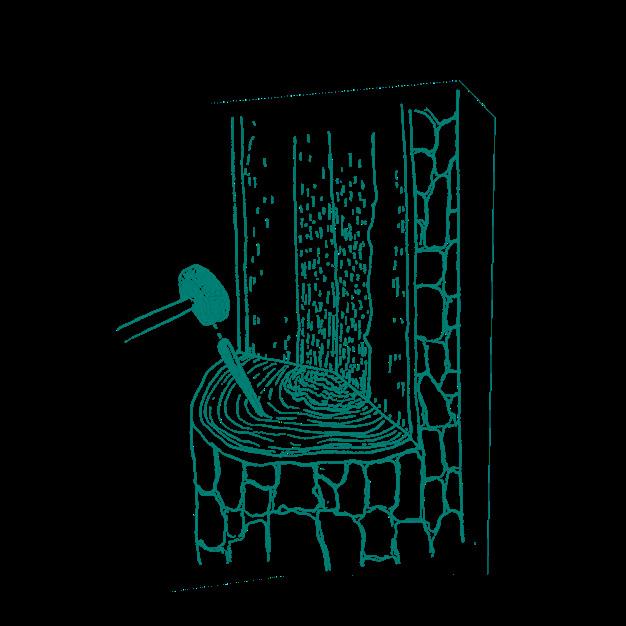
spring-summer 2021
The City of Atlanta, in partnership with Blackhall Studios, approves the swap of Dekalb County public lands at Intrenchment Creek Park for a parcel of land currently owned by the movie studio. The land deal is conducted in a semi-secretive series of board meetings and hearings.
may 15, 2021
Over 200 people gather at Intrenchment Creek Park
june 10, 2021
Three more excavators are burned on the parcel of land owned by Blackhall Studios. Neither action appears in local news media, although photographic evidence of the damage circulates on social media.
june 23-26, 2021
The first week of action brings hundreds of people into the movement.
october 18, 2021
A small group of rapid-responders disrupt the surveying and clearing of grounds at Old Atlanta Prison Farm. A surveillance tower is destroyed.
june 2021
Notices appear affixed in the forest notifying passersby that trees in the area have been “spiked,” with the consequence that cutting them could damage saws and possibly injure those utilizing them.
june 16, 2021
On the night that the Atlanta City Council is to vote on the construction ordinance for the “Cop City,” a handful of activists protest outside of the private residence of City Councilperson Joyce Shepherd, the sponsor of the ordinance.
september 2021
City Council meetings, held on Zoom because of coronavirusrelated restrictions, are repeatedly flooded with hours of objections to the project. Votes on the ground-lease ordinance are repeatedly delayed because of these objections and demonstrations at the homes of Atlanta Chief Operations Officer Jon Keen and City Councilperson Natalyn Archibong.
We don't need a soundstage for entertainment. Everything we need is already there. We don't need police training facilities. We demand an end to policing... Any further attempts at destroying the Atlanta Forest will be met with similar response. This forest was here long before us, and it will be here long after.
BLUE HOLLERS IN THE SHADOW OF THE HOLOCENE 052
ECOGRIEF
november 12, 2021
A demonstration takes place at Reeves Young Headquarters. Intelligence gathering by activists indicates that Reeves Young Construction has been contracted to destroy the forest and build the Cop City development. About thirty people converge at the company headquarters in Sugar Hill, Georgia, holding banners and demanding that the company sever their contract with the Atlanta Police Foundation.
november 27, 2021
A group of Muscogee (Creek) people return to their ancestral lands at the current site of Intrenchment Creek Park in the South River Forest, which, in Creek, is called Weelaunee. The Muscogee delegation calls on everyone to defend the land from the Cop City and Blackhall developments.
december 17, 2021
A dozen protesters march to the entrance gate of Blackhall Studios on Constitution Road and block the main entrance, chanting slogans. Shortly after, a large contingent of police raids the forest, evicting the protest camp established there.
december 20, 2021
According to an anonymously-written statement republished on the website Scenes from the Atlanta Forest, banners are hung in the backyard of the private residence of Dean Reeves, chairman of Reeves Young. Reportedly, Dean Reeves was among the board members present at the November 17 action and personally shoved and assaulted protesters.
january 18, 2022
In order to begin “boring” the land, a process necessary for determining the construction supplies needed for laying foundation, Reeves Young and a representative of the Atlanta Police Foundation enter the woods near Key Road and use a bulldozer to knock down many trees. Construction is stopped when protesters demand that they leave. The bulldozer remains at the scene; it is subsequently vandalized, losing its windows.
november 10-14, 2021
A wide range of cultural events, info-nights, bonfires, and meetings occur during a second week of action. This coincides with the establishment of an encampment in the forest; it lasts for six weeks.
november 20, 2021
Two more bulldozers burn in the forest. According to an anonymous statement republished on the Unoffensive Animal website, anonymous forest defenders

This equipment was located on the land-swap parcel currently owned by Blackhall Studios, the planned future location of “Michelle Obama Park.”
january 19, 2022
Several people climb into tree houses in the forest near the previous day’s confrontation, announcing their intention to remain there in order to delay further destruction.
...burnt two bulldozers in the south Atlanta forest. No Cop City, No Hollywood dystopia. Defend the Atlanta Forest.
MERGOAT MAG SPRING 2023 053
january 28, 2022
Sixty forest defenders march into South River Forest near the Old Atlanta Prison Farm to stop the boring and soil sample collection. Dekalb County Police attack the protesters, arresting four—the first arrests inside the forest in the context of the movement.
Forest defenders light smoke bombs and flares on their way to meet the tractors on January 28, 2022.
may 2022
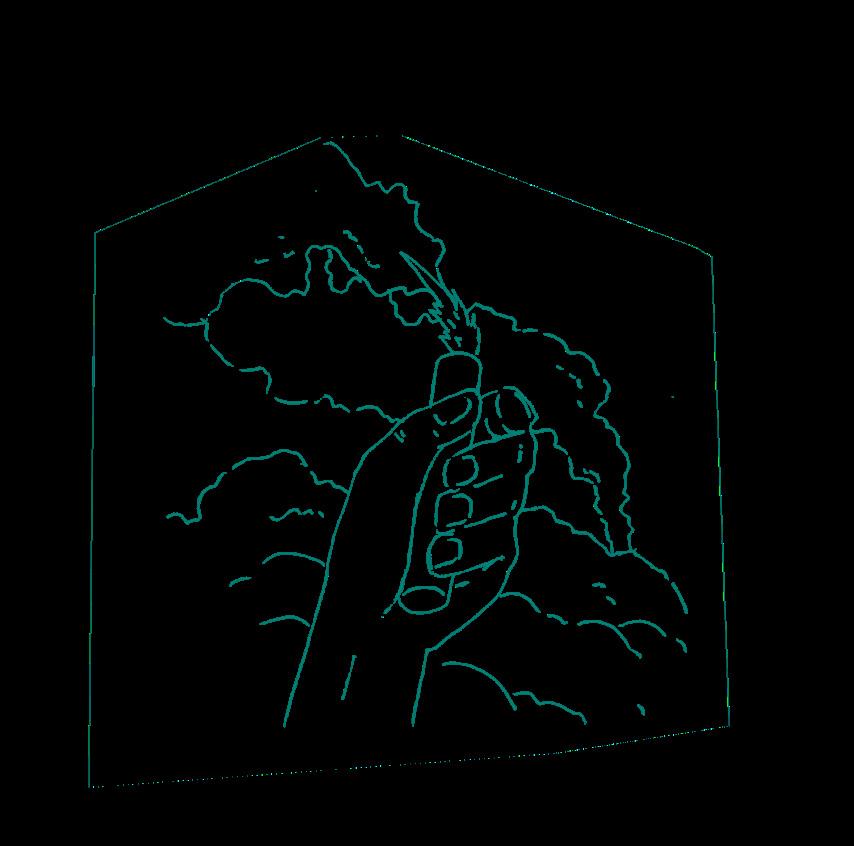
Across the country, at least twenty acts of direct action followed the police raid of May 2022.
At least half a dozen tree houses were constructed on the Old Atlanta Prison Farm and a section of Intrenchment Creek Park in late May 2022.
january 25-27, 2022
Long Engineering resumes surveying Old Atlanta Prison Farm, accompanied by the Atlanta Police Foundation, Atlanta police officers, and Dekalb County sheriffs.
march 1, 2022
According to another communiqué, five large Long Engineering trucks used to do survey work to help delineate destruction in the South Atlanta Forest were destroyed in solidarity with ecodefenders currently protecting the forest from being clear-cut to build cop city and more Hollywood infrastructure for Black Hall Studios.
march 19, 2022
Six machines owned by Reeves Young, including two large excavators and a bulldozer, are destroyed in Flowery Branch, Georgia.
The online communiqué reads:
Unless your company chooses to pull out of the APF's Cop City project of its own volition, we will undermine your profits so severely that you'll have no choice but to drop the contract.
BLUE HOLLERS IN THE SHADOW OF THE HOLOCENE ECOGRIEF 054
may 8, 2022
Hundreds of people poured into the forest: anarchists, environmentalists, abolitionists, and other direct action-oriented groups bringing tents, hammocks, sleeping bags, and food. Some arrived prepared to operate a field kitchen. Small encampments emerged everywhere, some adopting names for themselves. Clusters of tents and canopies appeared in a patchwork on both sides of the South River—some organized by affinity group, others by chance. It is difficult to take a head count in the forest, as the opponents of the movement have probably also noticed. The kitchen crews estimated that a minimum of 200 people were sleeping in the forest at night; on some days, considerably more people joined the occupation.

MERGOAT MAG SPRING 2023 055
Move back!
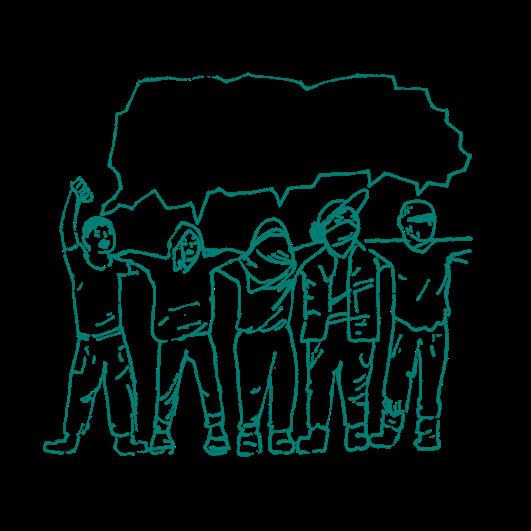
may
9, 2022
Several dozen people marched to the suburban home of Shepherd Long, the CEO of Long Engineering, a subsidiary of Atlas Technical Consultants and a subcontractor of Brasfield & Gorrie. This was the first of several such actions during the Third Week of Action.
may 12, 2022
Around eighty people in hoodies and camouflage descended on the Brasfield & Gorrie regional office in The Battery. Demonstrators chanted “Stop Cop City” while some in the crowd painted graffiti and shot fireworks at the façade of the building. After breaching the lawn of the facility, a few determined people began throwing paint balloons and stones at the building, cracking the plate glass windows. Others continued lobbing fireworks. After several minutes, the crowd dispersed into the surrounding streets.
june 6, 2022
A convoy of police officers accompanied a work crew on Key Road.
june 10, 2022
A few days later, the Dekalb County Government posted a “Stop Work” order at the entry gate to the Old Prison Farm, likely because of phone calls to various departments and commissions.
may 9, 2022
On the first day of the Week of Action, forest defenders awoke to the sound of falling trees. At the behest of Ryan Millsap, a small construction crew and a group of Dekalb County Sheriffs working as private security were making their way into the tree line from the Radio Control (“RC”) club on the southeast side of Intrenchment Creek Park. A number of determined people responded immediately, repelling the bulldozers with a few stones before linking arms and chanting “move back” in unison at the police officers further afield. One courageous person approached an officer and explained to him that the construction crew was engaging in illegal activity. Later, Dekalb County issued a “Stop Work” order, ostensibly following a flurry of calls by lawyers and neighborhood groups tipping them off about the illegal work.
may 11, 2022
A small crowd gathered outside the suburban home of Keith Johnson, regional President of Brasfield & Gorrie. Protesters scaled the fence and banged on drums early in the morning, chanting “Drop the contract!” Johnson is invested with the authority to make decisions for Brasfield & Gorrie—and he is compensated handsomely for this responsibility, judging by the size and location of his multi-house estate.
may 11,
2022
The frustration and bitterness of the police, which had accumulated for a week, was unleashed on those living in the Old Atlanta Prison Farm. In the early morning, dozens of police vehicles, helicopters, and drones encircled the forest. Atlanta Police Department, Dekalb County Sheriffs, the Department of Homeland Security, Department of Natural Resources, the Atlanta Bomb Squad, the Joint Terrorism Task Force, and possibly other agencies mobilized their forces and prepared to raid.
For the next six months, no work took place inside the perimeter of the forest without considerable police protection.
BLUE HOLLERS IN THE SHADOW OF THE HOLOCENE ECOGRIEF 056
july 23, 2022
The Week of Action launched with a ribboncutting ceremony that drew over 100 people. A lovely official-looking sign was planted in the ground reading “Weelaunee People’s Park” on one side and “South River Forest Park” on the other. After cutting the ribbon, the assembled crowd chanted “People’s park, people’s park!” while cars and equipment began loading in. By afternoon, hundreds of people filled the area.
july 30, 2022
On the final day of the Week of Action, campers woke up to shouting:
june and july
Throughout June and July and continuing well into fall, police began carrying out ritualistic “sweeps” of the forest, specifically the Old Atlanta Prison Farm.
july 28, 2022
The music festival began on July 28. The promotional materials promised three days of “Peace, Love, and Anarchy.”
Around 8 a.m., Ryan Millsap and a colleague of his arrived at Weelaunee People’s Park with a tow truck pulling an excavator atop a flatbed trailer, accompanied by a small cohort of Dekalb County police he had hired as private security. In Georgia, you can legally hire offduty police, who are permitted to bring their service weapons, uniforms, and city-owned vehicles with them while fulfilling a private contract. This is unusual in other parts of the Global North, but common enough elsewhere in the Americas.
Millsap did not venture far from his car, but his colleague, Anthony Wayne James, approached forest defenders who were seated beneath a gazebo in the middle of the parking lot. James began using the excavator to hit the roof of the gazebo, despite the potentially lethal risk that this posed to those beneath it. At this point, the cops-for-hire intervened, notifying James that it was not acceptable for him to attempt to risk killing people in front of them. Frustrated, he began screaming at them to arrest people:
august 3, 2022
A large operation did indeed occur around the forest. On Bouldercrest Road, Key Road, Fayetteville Road, Constitution, and Old Constitution—all of the streets adjacent to the section of forest that was occupied—construction workers and utility companies initiated work, accompanied by police officers and security guards.

december 13, 2022
Following weeks of propaganda, a massive interagency raid encircled the forest on December 13. By the end of the day, five people were under arrest. All of them were slapped with felony charges including “Domestic Terrorism.”
"Do your jobs!"
MERGOAT MAG SPRING 2023 057
"They are going to tow your car! Everybody wake up! A tow truck is here! Get to the parking lot!"
december 16, 2022
The Dekalb County government denied the “Land Disturbance Permit” required to begin the destruction of the Old Atlanta Prison farm. This was the fourth time that an application for the permit was denied. The next day, 200 people gathered in East Atlanta Village. At that point, this was one of the biggest local protests in the context of the movement.
december 21, 2022
A week after the raid, Ryan Millsap and his henchman entered Weelaunee People’s Park. Nearly eight months after his attempt to destroy the area during the third Week of Action, he finally had a free hand.
december 22, 2022
The next day, the contractors returned. This time, they demolished the parking lot with heavy machinery and tore up a large segment of the paved bicycle path.
They brought bulldozers and heavy machinery into the area through the entrance of the Radio Control club. Reportedly, the Georgia Bureau of Investigations requested this for the explicit purpose of denying anarchists the ability to operate freely in the forest. They knocked down dozens of trees along the paved bicycle path, overturned the park gazebo, and cut down a large number of saplings and bushes. By midday, they had destroyed substantial swaths of the forest near the parking lot and trailhead, creating clear lines of sight at ground level.
january 18, 2023
january 18, 9:04 am
Some thirty or more shots rang out in the forest.
The Georgia State Patrol had killed Manuel Páez Terán, a Venezuelan anarchist of Tomoto-Cuica heritage who went by the name Tortuguita in the forest.
In the early hours of January 18, police established an operations control center in the parking lot of Gresham Park. Dozens of police vehicles from metroAtlanta agencies began amassing there. Across the forest, other agencies spearheaded by Atlanta Police Department began amassing on Key, Fayetteville, Woodham, and adjacent streets. Helicopters were circling overhead. Forest defenders could hear the sounds of police drones hovering near their tree houses and tents. K9 units arrived with dogs. The bomb squad was stationed nearby, while all-black SUVs parked alongside Constitution Road near Shadowbox Studios. For the first time, the Georgia State Patrol entered Weelaunee People’s Park.
Continue to Crimethinc.com for more recent updates on Stop Cop City.

BLUE HOLLERS IN THE SHADOW OF THE HOLOCENE ECOGRIEF 058
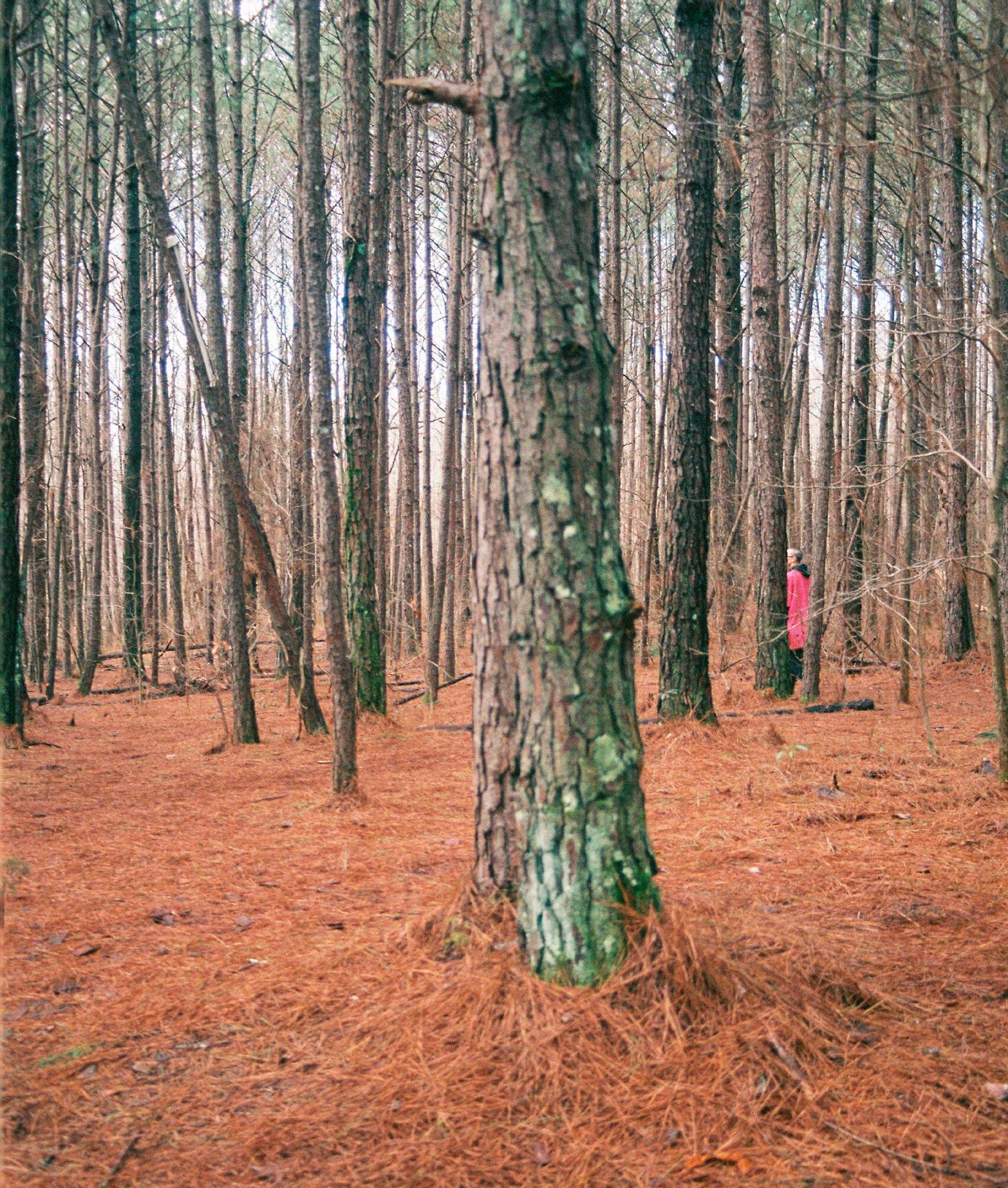
Turtle -shaped Sunbeam
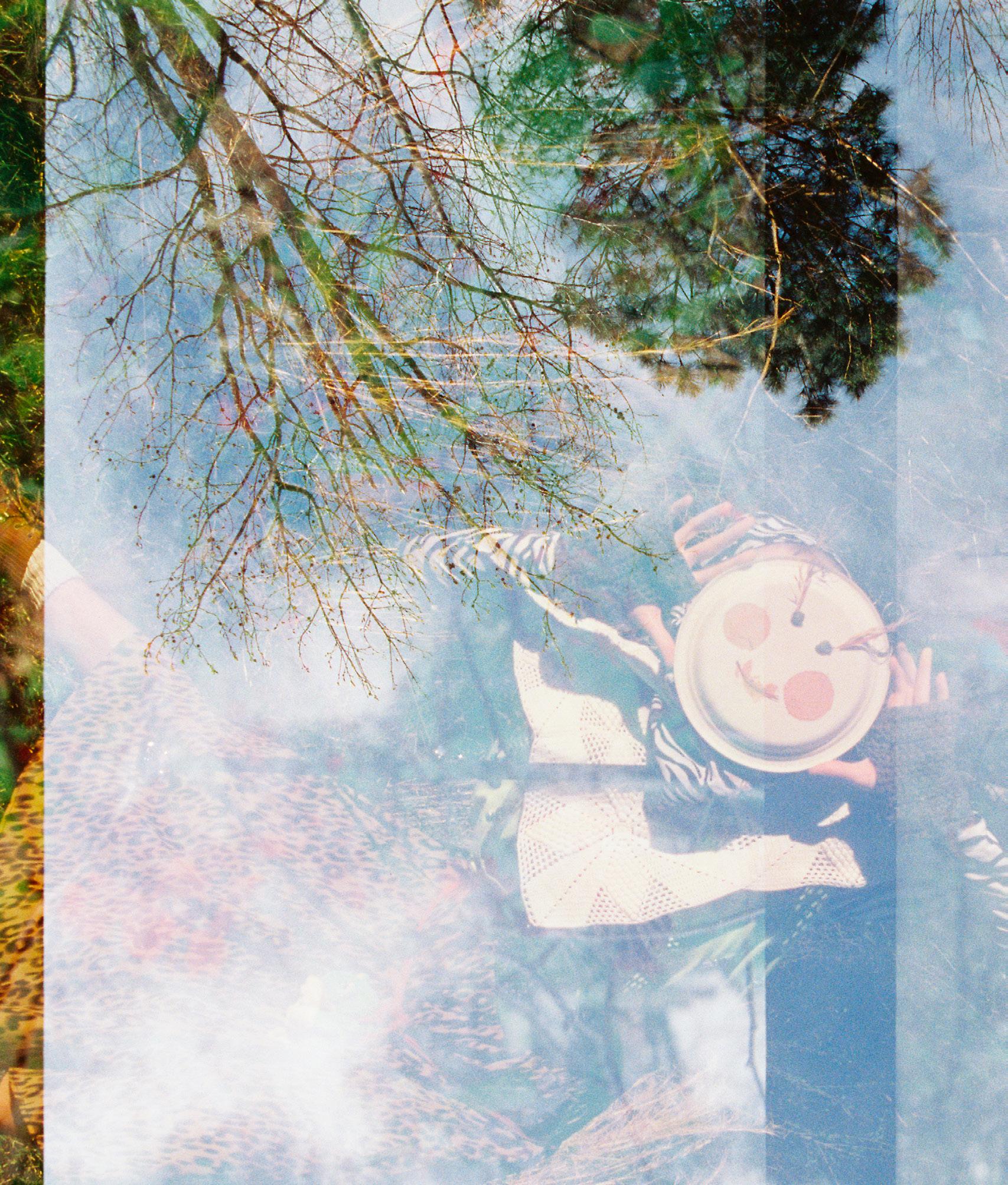
BLUE HOLLERS IN THE SHADOW OF THE HOLOCENE 060 ECOGRIEF
Duir
Aidan
Grief
Nonlinear Entrapping

Today sad and cold
Tomorrow a spot of sun
Night falls and sorrow’s way is won one day bleak, the next day rage
The next day a spot of joy; despite it all
I am alive
Too many have fallen
Too many people
Too many trees
I still feel the sun on my skin
And I laugh because I love you
Like I cry because I love you
Nature’s way of knowing itself; Ecology
We are part of it too
We could be
We would be
If they could let us be
Industrial man can’t build an oldgrowth forest
Can’t
Can’t be braver than nature
Brave is nature
Can’t be still as the trees
Swaying, gentle The industrial man hopes to preclude That nature can Tort lived outside Away with industry’s man
As much as they could
As much as any of us could try They believed
Weelaunee called and Tort answered Their smile the day they first shared the ink
Shaped like a flag
Above their heart
Flesh-bound with their love of the forest of that great oak tree
“Nobody had to die for this”
We say that all the time
Forgetting that powerful capitalists
Truffle hogs ever-sniffing
Believe someone should die, blood on their face for another dime
MERGOAT MAG SPRING 2023 061
Ecological grief is in all of us; knowing that everything is connected, that all of living relates to the next. One small portion of the world and life in the world is part and parcel to the largest thing you could possibly imagine—to the sea, to the sky, to the sweeping lands. The same factors that ecology is up against, that mother earth is up against, are the factors that oppress us socially.
We are just as bound by our grief as we are bound to this earth.
Before the raids, there was a sense of love, beauty, community, and culture. What doesn’t make sense is how anyone could murder someone because of this, even when considering the police. They killed a climate activist? They killed my friend? How could they come into the forest and not notice that what we were building was love? And I pause to remind myself that love is their greatest threat. I see why, to them, destruction is the only way forward in knowing the abundance we grew within the community of the Weelaunee Forest. But to them I decry: you can’t destroy love—not with bulldozers, not with arrests, not with guns.
A morning dove coos, a kestrel cries. I think of you, Tortuguita.
The sun greets my skin, and beside me I see Tortuguita’s spirit. I hear their contagious laugh, I see their brimming smile. The sunbeams twist and bounce as their curls did. I remember the light that surrounded them. The light that infected us all. I feel it on my skin. Warm, hopeful, brave.
Affirming that I am here, I am one leg of the millipede that is this movement. Crawling, determined, one with the earth. Easily perceived to be harmful by those in power. Those unable to witness beauty were it held like a rose beneath their nose.
As they continue their destruction, somehow in our grief we strengthen. Our empathy for each other grows. Our cleverness is required. But in this tailspin of loss, where do I look for the right words to encapsulate something as buoyant and radical and illustrious as the life of our friend Tortuguita?
BLUE HOLLERS IN THE SHADOW OF THE HOLOCENE ECOGRIEF 062
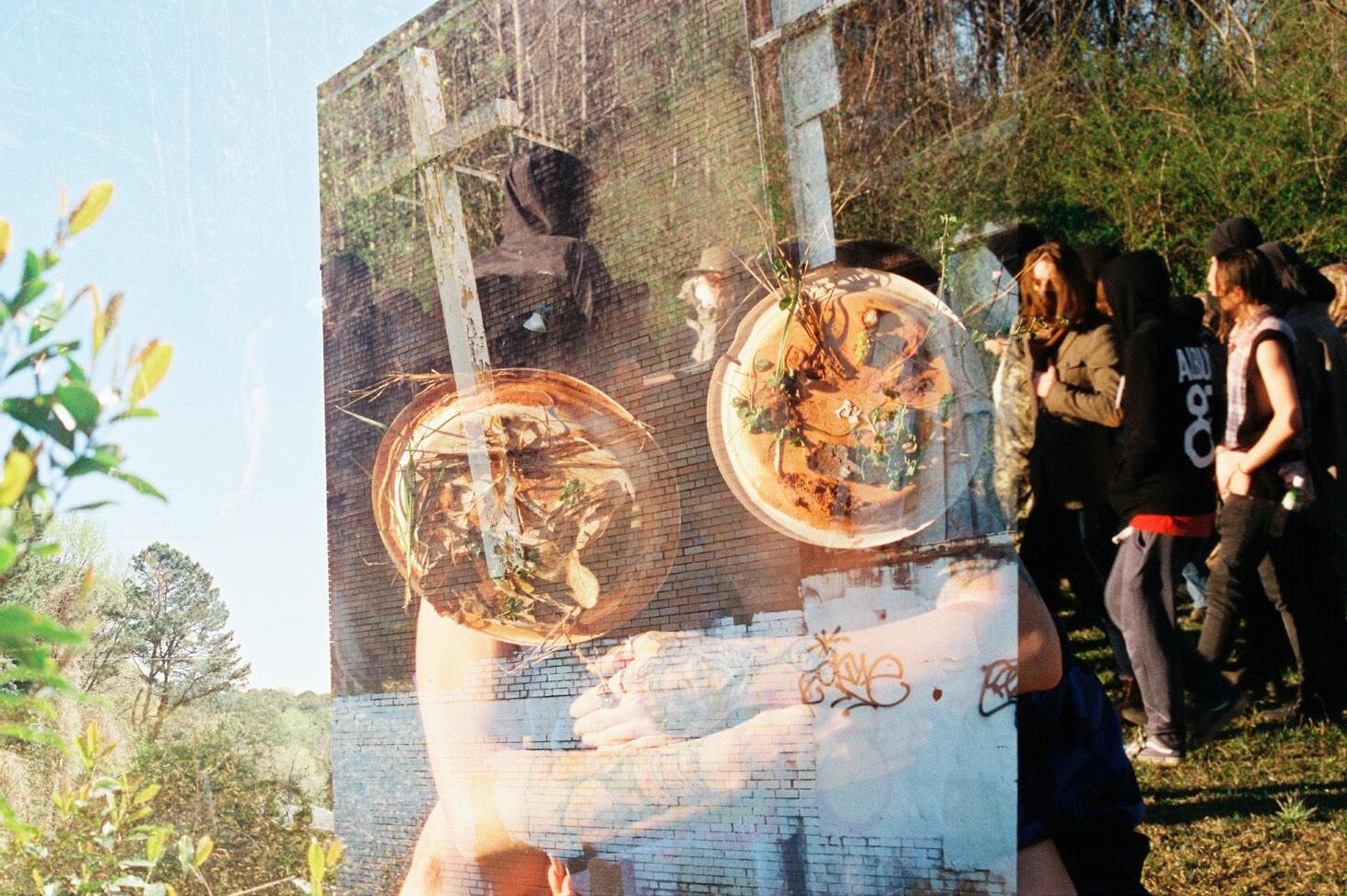
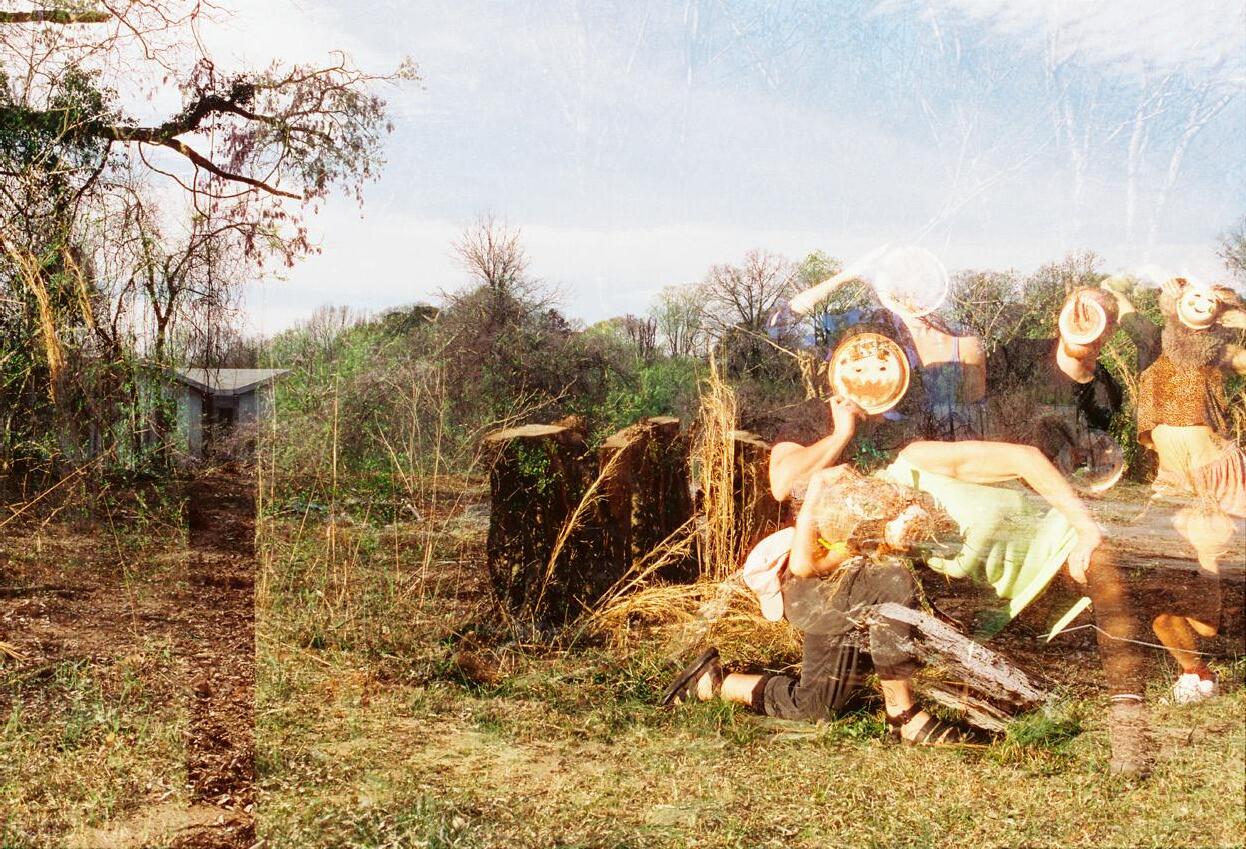
I look to the trees of the Weelaunee, who stand still and protect the loss. Protect the memories.
I look to my friends, comrades, who chat on the phone. Tort had the funniest Signal names: three raccoons in a trenchcoat, as I first knew them. At least two smiles per joke, relieving us even here as we grieve you. We laugh, we feel you tug at our humor through the veil. We feel you here as we howl into the night, candles burning for you, tears flowing for you, wails roaring for you. We gather to fathom that you could be gone and then that you are. We feel you here as we throw caution to the wind, smoking another cigarette.
I look to the earth, where across its unmatched beauty people are crying for you, Tort. As they cry for this earth, for Tyre Nichols, for all those taken and murdered by the police. For doing nothing. Or for being too beautiful, too impactful in their love.

As we cycle through waves of grief after waves of grief with each tree, mountain, water source we lose to greed, to power, to hate and control we cry.
But for us, knowing what is at stake, we remember there are two ways to cry. The cries that clog our throats and grip our spirits as we mourn and the cries of that sorrow’s dear brother, anger, that rip across our tongues loud enough to reach the next realm:
WE WILL CONTINUE YOUR FIGHT YOUR MEMORY WILL NEVER DIE NOR WILL THE FOREST NOR WILL THE FOREST!
I remember talking with Tortuguita. We were sitting along the barricades, pushed aside by ants, at the mouth of Weelaunee People’s park. It was a hot late summer’s day. They strode up to me, their camo shirt flapping open, curls dancing in the wind, their laughter encapsulating the furthest reaches of their aura, giving sound to something almost unseeable.

We talked about community we talked about trust. How do we truly find ways to connect when security culture and the state posture their tactics to sow fear for each other in our hearts.
Tort gave me a wry smile. We must believe we can trust each other. With trust comes happiness, joy, ideations, feelings that can change the world.
Just as easily as the stress can poison, we can heal. We heal with trust. And in my experience with Tort, a dose of sunshine, an easysmoked spliff and a moment with the piano in the gazebo could build a bridge in under thirty minutes. Welcome to the forest, comrades.
This spirit of Tort changed the dynamic of the forest. All of a sudden we were hustling not only to defend the forest, but to create the world we believe we deserve for our collective gain and our respective joys. Imagine how many people we could feed if we had a big kitchen? Imagine if we had enough art out here that nobody feared the police destruction? And so we created. And so we built, and now we hold a movement full of more trust and more love.
As Tort would have felt for any of us, we feel rage. As we all feel for each tree we remember rage is a useful feeling. May it show us what we truly love. May the grief, which perhaps is love with nothing visible to attach to, teach us that what we value most is each other. That the trees, too, are our families. That they are the true conductors of the land. Knowing it. Being it. In Tort’s name we must continue to protect it.
MERGOAT MAG SPRING 2023 065
We wouldn’t be here without you, Tort.
I trust you still. Through the facade of life and death, I feel you trust me too. In dark hours, as we grieve, the smallest turtles appear. They flop off a log, they reappear on the next, they show us they are not one but many. A multiplicity of Tortuguitas. You are all in our spirits now. If the bonds weaken, may you puppet that we trust each other again. May you remind us we are strong. May we never forget to love like you did. To share like you did. Abundantly, without judgment, with the hopes of a better world overwhelming the hate icons in each curse-ed greenback.
While I yearn for recourse from grief, it is nowhere to be found. Instead, I fight. I cry. I scream. I search for ways to integrate my grief with my peace. All this pain and death met with such frigidity such hate. The city says they’ll keep razing the forest even though it’s illegal. There is no room for surprise in our watery eyes. They are not here for us. I hold the hands of my friends as they cry mighty tears. I am my own friend as I am yours.

I am those I love, as empathy holds us entwined with loss.
Gathering grieving comforts from those who spend each day believing … may we need to grieve just a little less.
Protect the forest. Protect our future. Protect our community from 382 acres of grief. Protect us from violence expanded, from hate compounded, fascism rewarded.
Protect us like the trees do.
Back in December, the grief for the trees was enough for us. The grief of the camps, the rhythms, the spirit of the first go. It was enough. We were holding each other in that grayness. Plucking thru piles, plucking thru dust.
Torn apart because it could be. Because the state plays vicious games. Nothing alive is sacred. Only property to them holds value. So the police came and slashed each tent and tarp and flag. They came back with loaded guns.
They surrounded a small sleeping turtle resting between actions, of slow, assured success.
066
BLUE HOLLERS IN THE SHADOW OF THE HOLOCENE
ECOGRIEF
And they opened fire
They opened fire
They opened fire
They opened fire
They opened fire
They opened fire
They opened fire
They opened fire
They opened fire
THEY OPENED FIRE
THEY OPENED FIRE
THEY OPENED FIRE
THEY OPENED FIRE
THEY OPENED FIRE

To be sure they had murdered our friend.
When we ask of the lessons of the movement, of the trees, who better could answer in more lightness, hope, and meaningful context and creativity than our fallen comrade Tortuguita?

MERGOAT
2023 067
MAG SPRING

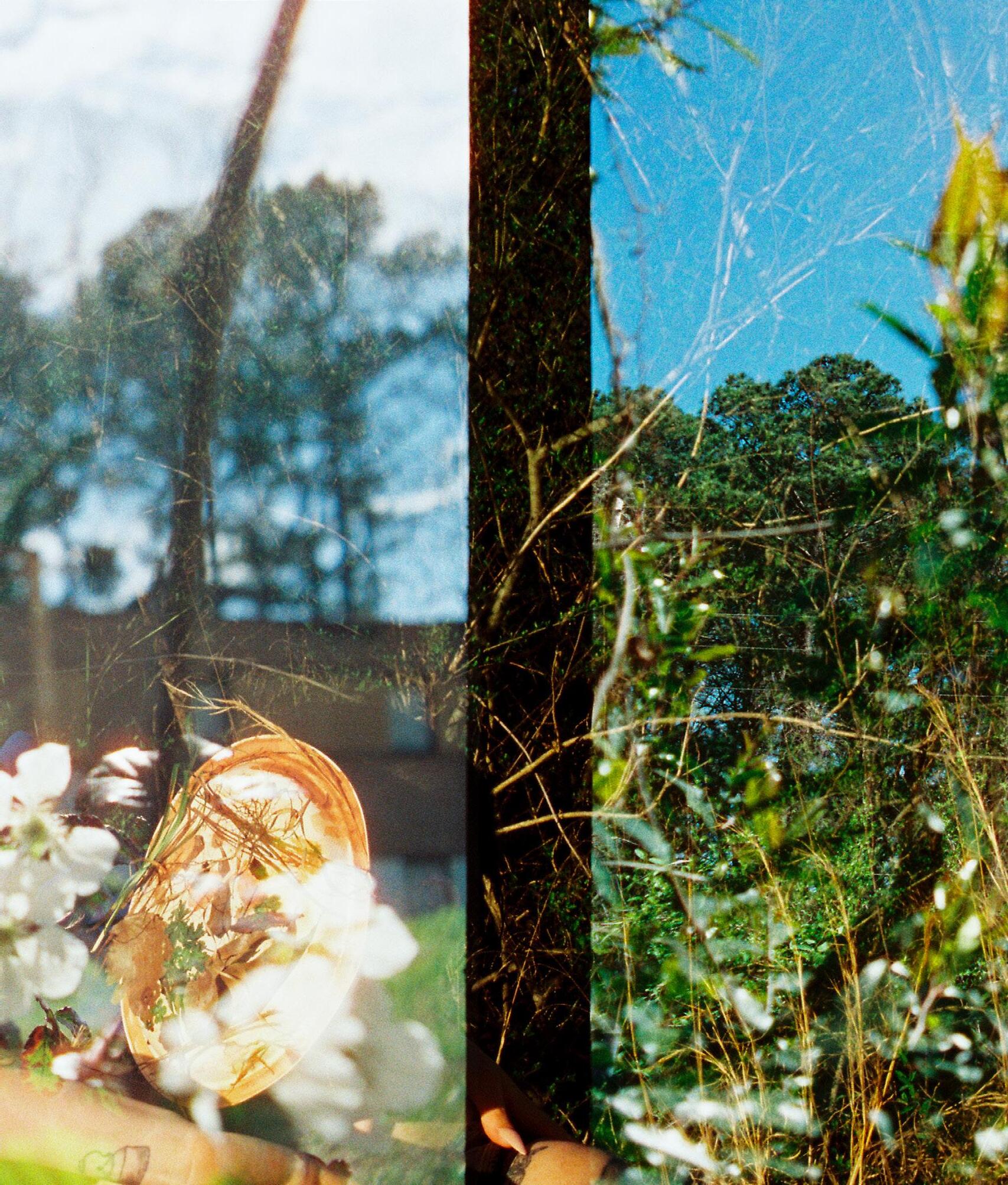
Could these robots of the state have possibly known what martyr they chose? Was it their brown skin that made the trigger that much easier to pull? Did they look at them before they shot them? Or did they murder, blindly, through the thin walls of their tent? Was it their racism that killed them? Sent to the forest with the imperative to kill? Autopsy results say Tort was sitting, legs crossed, hands raised. The police shot them 57 times anyway.
The forest defender skirts the status quo asks questions that force our movement to grow. The mainstream attacks these caught ones for being from another state: colonial reasoning. This “state” is my home; I’m tangled up in every corner. Spooling in love and loss and history. I don’t have the peace to sit in those woods. But my far-traveled friends in the forest, the nomad comrades, met the needs of the Weelaunee. Searching for a place for their purpose as our woods, this home, searched for guardians. As we, the people of Atlanta, take moments to recharge. Grateful for the shift in guards.
All my brave forest friends, teaching patience, weathering storms. Never letting fear stop them from the joy of their forest home.
And we yield, we are burnt out on grief. Shot 57 times at least.
Seated, hands raised.
Horror unending, horror unyielding.
This city I’ve loved for my mom, my mom’s mom, my father who can’t fully walk it.
City I’d never depart.
Bureaucratically unanimous, each mouth reaches back to the same circuit board.
Ungrounded, static, fraying, sparks: senselessness. Unyielding. Deliberate.
Destruction like theirs has to be planned. Closed doors with such blindness they think we cannot see, but the stench escapes by the crack in the door. It wretches us: guts full of poison when we consume this as if it may become reality.
Tortuguita knew better, knew we may always dream of a better way. The power of the creative: revolutionary. In the face of darkness: a powerful light.
BLUE HOLLERS IN THE SHADOW OF THE HOLOCENE 070
ECOGRIEF
A friend far away grieves with me. Voice messages across the seas:
If your country sees it
If your country sees it
We know this boastful city doesn’t truly care of its people nor of its trees.
Nearby the collective supports the grief: a song, a dance, a bodywork ritual.

We memorialize! We fight! We find peace in naught but the earth and the souls that walk it.
We dig out holes for our loved ones, for the creatures we knew.
Back to the earth, they whisper, now we strengthen it, too.
Each passing beauty taken too soon by the hands of corruption, colonization, fumes holds in its decay a power to nourish our future. To slaughter someone generous, creative, keen, unyielding.
Revolutionaries do not die They grow
We teem with love. Success is assured. No effort is in vain. The forest is ours, forever.
MERGOAT MAG SPRING 2023 071
community art making for tortuguita Hosted by Noah Grigni, Atlanta Narrative Imagination (ANI), and Mirina at No Tomorrow Underground in Atlanta. All who gathered at No Tomorrow offered their art in love and support to Tortuguita’s mother, Belkis Terán, who has become a leader in the movement.


IN THE
OF THE HOLOCENE ECOGRIEF 072
BLUE HOLLERS
SHADOW
WILL NEVER BE BUILT COP CITY WILL NEVER BE BUILT COP CITY WILL NEVER BE BUILT COP CITY WILL NEVER BE BUILT COP CITY WILL NEVER BE BUILT COP CITY WILL NEVER BE BUILT COP CITY WILL NEVER BE BUILT COP CITY WILL NEVER BE BUILT COP CITY WILL NEVER BE BUILT COP CITY WILL NEVER BE BUILT COP CITY WILL NEVER BE BUILT COP CITY WILL NEVER BE BUILT COP CITY WILL NEVER BE BUILT COP CITY WILL NEVER BE BUILT COP CITY WILL NEVER BE BUILT COP CITY WILL NEVER BE BUILT COP CITY WILL NEVER BE BUILT WILL NEVER BE BUILT COP CITY WILL NEVER BE BUILT COP CITY WILL NEVER BE BUILT COP CITY WILL NEVER BE BUILT COP CITY WILL NEVER BE BUILT COP CITY WILL NEVER BE BUILT COP CITY WILL NEVER BE BUILT COP CITY WILL NEVER BE BUILT COP CITY WILL NEVER BE BUILT COP CITY WILL NEVER BE BUILT COP CITY WILL NEVER BE BUILT COP CITY WILL NEVER BE BUILT WILL NEVER BE BUILT COP CITY WILL NEVER BE BUILT COP CITY WILL NEVER BE BUILT COP CITY WILL NEVER BE BUILT COP CITY WILL NEVER BE BUILT COP CITY WILL NEVER BE BUILT COP CITY WILL NEVER BE BUILT COP CITY WILL NEVER BE BUILT COP CITY WILL NEVER BE BUILT COP CITY WILL NEVER BE BUILT COP CITY WILL NEVER BUILT COP CITY WILL NEVER BE BUILT WILL NEVER BE BUILT COP CITY WILL NEVER BE BUILT COP CITY WILL NEVER BE BUILT COP CITY WILL NEVER BE BUILT COP CITY WILL NEVER BUILT COP CITY WILL NEVER BE BUILT COP CITY WILL NEVER BE BUILT COP CITY WILL NEVER BE BUILT COP CITY WILL NEVER BE BUILT COP CITY WILL NEVER BE BUILT COP CITY WILL NEVER BE BUILT COP CITY WILL NEVER BE BUILT WILL NEVER BE BUILT COP CITY WILL NEVER BE BUILT COP CITY WILL NEVER BE BUILT COP CITY WILL NEVER BE BUILT COP CITY WILL NEVER BE BUILT COP CITY WILL NEVER BE BUILT COP CITY WILL NEVER BE BUILT COP CITY WILL NEVER BE BUILT COP CITY WILL NEVER BE BUILT COP CITY WILL NEVER BE BUILT COP CITY WILL NEVER BE BUILT COP CITY WILL NEVER BE BUILT WILL NEVER BE BUILT COP CITY WILL NEVER BE BUILT COP CITY WILL NEVER BE BUILT COP CITY WILL NEVER BE BUILT COP
NEVER

BE BUILT COP CITY WILL NEVER BE BUILT COP CITY WILL NEVER BE BUILT COP CITY WILL NEVER BE BUILT COP CITY WILL NEVER BE BUILT COP CITY WILL NEVER BE BUILT COP CITY WILL NEVER BE BUILT COP CITY WILL NEVER BE BUILT COP CITY WILL NEVER BE BUILT COP CITY WILL NEVER BE BUILT COP CITY WILL NEVER BE BUILT COP CITY WILL NEVER BE BUILT COP CITY WILL NEVER BE BUILT COP CITY WILL NEVER BE BUILT COP CITY WILL NEVER BE BUILT COP CITY WILL NEVER BE BUILT COP CITY WILL NEVER BE BUILT COP CITY WILL NEVER BUILT COP CITY WILL NEVER BE BUILT COP CITY WILL NEVER BE BUILT COP CITY WILL NEVER BE BUILT COP CITY WILL NEVER BE BUILT COP CITY WILL NEVER BE BUILT COP CITY WILL NEVER BE BUILT COP CITY WILL NEVER BE BUILT COP CITY WILL NEVER BE BUILT COP CITY WILL NEVER BE BUILT COP CITY WILL NEVER BE BUILT COP CITY WILL NEVER BE BUILT COP CITY WILL NEVER BE BUILT COP CITY WILL NEVER BE BUILT COP CITY WILL NEVER BE BUILT COP CITY WILL NEVER BE BUILT COP CITY WILL NEVER BE BUILT COP CITY WILL NEVER BUILT COP CITY WILL NEVER BE BUILT COP CITY WILL NEVER BE BUILT COP CITY WILL NEVER BE BUILT COP CITY WILL NEVER BE BUILT COP CITY WILL NEVER BE BUILT COP CITY WILL NEVER BE BUILT COP CITY WILL NEVER BE BUILT COP CITY WILL NEVER BE BUILT COP CITY WILL NEVER BE BUILT COP CITY WILL NEVER BE BUILT COP CITY WILL NEVER BE BUILT COP CITY WILL NEVER BE BUILT COP CITY WILL NEVER BE BUILT COP CITY WILL NEVER BE BUILT COP CITY WILL NEVER BE BUILT COP CITY WILL NEVER BE BUILT COP CITY WILL NEVER BUILT COP CITY WILL NEVER BE BUILT COP CITY WILL NEVER BE BUILT COP CITY WILL NEVER BE BUILT COP CITY WILL NEVER BE BUILT COP CITY WILL NEVER BE BUILT COP CITY WILL NEVER BE BUILT COP CITY WILL NEVER BE BUILT COP CITY WILL NEVER BE BUILT COP CITY WILL NEVER BE BUILT COP CITY WILL NEVER BE BUILT COP CITY WILL NEVER BE BUILT COP CITY WILL NEVER BE BUILT COP CITY WILL NEVER BE BUILT COP CITY WILL NEVER BE BUILT COP CITY WILL NEVER BE BUILT COP CITY WILL NEVER BE BUILT COP CITY WILL NEVER BUILT COP CITY WILL NEVER BE BUILT COP CITY WILL NEVER BE BUILT COP CITY WILL NEVER BE BUILT COP CITY WILL NEVER BE BUILT COP CITY WILL NEVER BE BUILT COP CITY WILL NEVER BE BUILT COP CITY WILL NEVER BE BUILT COP CITY WILL NEVER BE BUILT COP CITY WILL NEVER BE BUILT COP CITY WILL NEVER BE BUILT COP CITY WILL NEVER BE BUILT COP CITY WILL NEVER BE BUILT COP CITY WILL NEVER BE BUILT COP CITY WILL NEVER BE BUILT COP CITY WILL NEVER BE BUILT COP CITY WILL NEVER BE BUILT COP CITY WILL NEVER BUILT COP CITY WILL NEVER BE BUILT COP CITY WILL NEVER BE BUILT COP CITY WILL NEVER BE BUILT COP CITY WILL NEVER BE BUILT COP CITY WILL NEVER BE BUILT COP CITY WILL NEVER BE BUILT COP CITY WILL NEVER BE BUILT COP CITY WILL NEVER BE BUILT COP CITY WILL NEVER BE BUILT COP CITY WILL NEVER BE BUILT COP CITY WILL NEVER BE BUILT COP CITY WILL NEVER BE BUILT COP CITY WILL NEVER BE BUILT COP CITY WILL NEVER BE BUILT COP CITY WILL NEVER BE BUILT COP CITY WILL NEVER BE BUILT COP CITY WILL NEVER BE BUILT COP CITY WILL NEVER BE BUILT COP CITY WILL NEVER BE BUILT COP CITY WILL NEVER BE BUILT COP CITY WILL NEVER BE BUILT COP CITY WILL NEVER BUILT COP CITY WILL NEVER BE BUILT COP CITY WILL NEVER BE BUILT COP CITY WILL NEVER BE BUILT COP CITY WILL NEVER BE BUILT COP CITY WILL NEVER BE BUILT COP CITY WILL NEVER BE BUILT COP CITY WILL NEVER BE BUILT COP CITY WILL NEVER BE BUILT COP CITY WILL NEVER BE BUILT COP CITY WILL NEVER BE BUILT COP CITY WILL NEVER BE BUILT COP CITY WILL NEVER BE BUILT COP CITY WILL NEVER BE BUILT COP CITY WILL NEVER BE BUILT COP CITY WILL NEVER BE BUILT COP CITY WILL NEVER BE BUILT COP CITY WILL NEVER BE BUILT COP CITY WILL NEVER BE BUILT COP CITY WILL NEVER BE BUILT COP CITY WILL NEVER BE BUILT COP CITY WILL NEVER BE BUILT COP CITY WILL NEVER BE BUILT COP CITY WILL NEVER BE BUILT COP CITY WILL NEVER BE BUILT COP CITY WILL NEVER BE BUILT COP CITY WILL NEVER BE BUILT COP CITY WILL NEVER BUILT COP CITY WILL NEVER BE BUILT COP CITY WILL NEVER BE BUILT COP CITY WILL NEVER BE BUILT COP CITY WILL NEVER BE BUILT COP CITY WILL NEVER BE BUILT COP CITY WILL NEVER BE BUILT COP CITY WILL NEVER BE BUILT COP CITY WILL NEVER BE BUILT COP CITY WILL NEVER BE BUILT COP CITY WILL NEVER BE BUILT COP CITY WILL NEVER BE BUILT COP CITY WILL NEVER BE BUILT COP CITY WILL NEVER BUILT COP CITY WILL NEVER BE BUILT COP CITY WILL NEVER BE BUILT COP CITY WILL NEVER BE BUILT COP CITY WILL NEVER BE BUILT COP CITY WILL NEVER BE BUILT COP CITY WILL NEVER BE BUILT COP CITY WILL NEVER BE BUILT COP CITY WILL NEVER BE BUILT COP CITY WILL NEVER BE BUILT COP CITY WILL NEVER BE BUILT COP CITY WILL NEVER BE BUILT COP CITY WILL NEVER BE BUILT COP CITY WILL NEVER BUILT COP CITY WILL NEVER BE BUILT COP CITY WILL NEVER BE BUILT COP CITY WILL NEVER BE BUILT COP CITY WILL NEVER BE BUILT COP CITY WILL NEVER BE BUILT COP CITY WILL NEVER BE BUILT COP CITY WILL NEVER BE BUILT COP CITY WILL NEVER BE BUILT COP CITY WILL NEVER BE BUILT COP CITY WILL NEVER BE BUILT COP CITY WILL NEVER BE BUILT COP CITY WILL NEVER BE BUILT COP CITY WILL NEVER BE BUILT COP CITY WILL NEVER BE BUILT COP CITY WILL NEVER BE BUILT COP CITY WILL NEVER BE BUILT COP CITY WILL NEVER BE BUILT COP CITY WILL NEVER BE BUILT COP CITY WILL NEVER BE BUILT COP CITY WILL NEVER BE BUILT COP CITY WILL NEVER BE BUILT COP CITY WILL NEVER BE BUILT COP CITY
BUILT
CITY
BUILT
CITY
BUILT
CITY
BUILT
BUILT COP CITY
BE BUILT COP CITY
BE BUILT COP CITY
BUILT COP CITY
BUILT COP CITY
BUILT COP CITY
NEVER BE BUILT COP CITY WILL NEVER BE BUILT COP CITY WILL NEVER BE BUILT COP CITY WILL NEVER BE BUILT COP CITY WILL NEVER BE BUILT COP CITY WILL NEVER BE BUILT COP CITY WILL NEVER BE BUILT COP CITY WILL NEVER BE BUILT COP CITY WILL NEVER BE BUILT COP CITY WILL NEVER BE BUILT COP CITY WILL NEVER BE BUILT COP CITY WILL NEVER TORTUGUITA LA LUCHA VIVE SIGUE
CITY WILL NEVER BE BUILT COP CITY WILL NEVER BE
COP
WILL NEVER BE
COP
WILL NEVER BE
COP
WILL NEVER BE
COP CITY WILL
WILL NEVER
WILL NEVER
WILL NEVER BE
WILL NEVER BE
WILL NEVER BE
WILL


A tlanta A tlanta V oices V oices &









from from



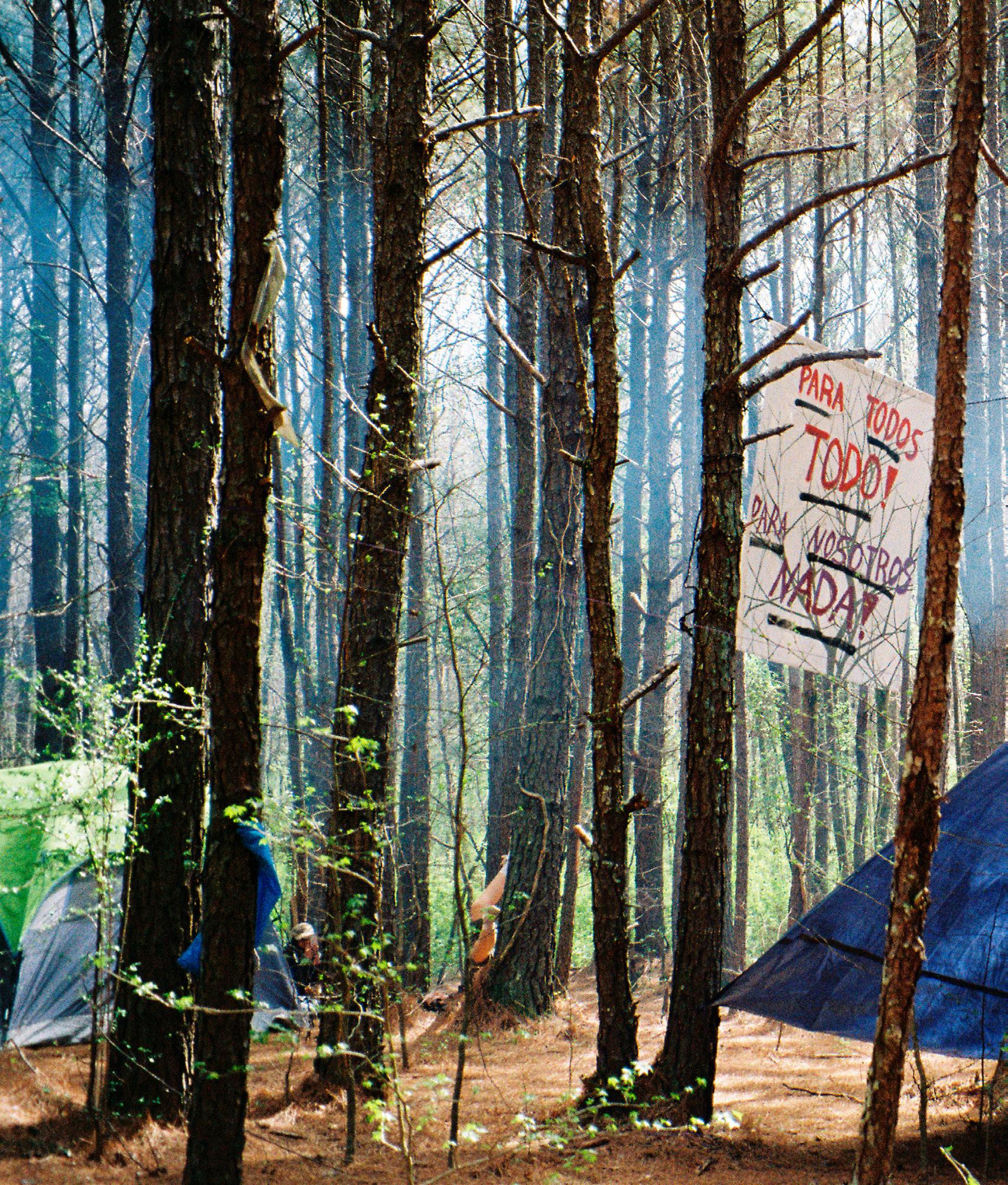
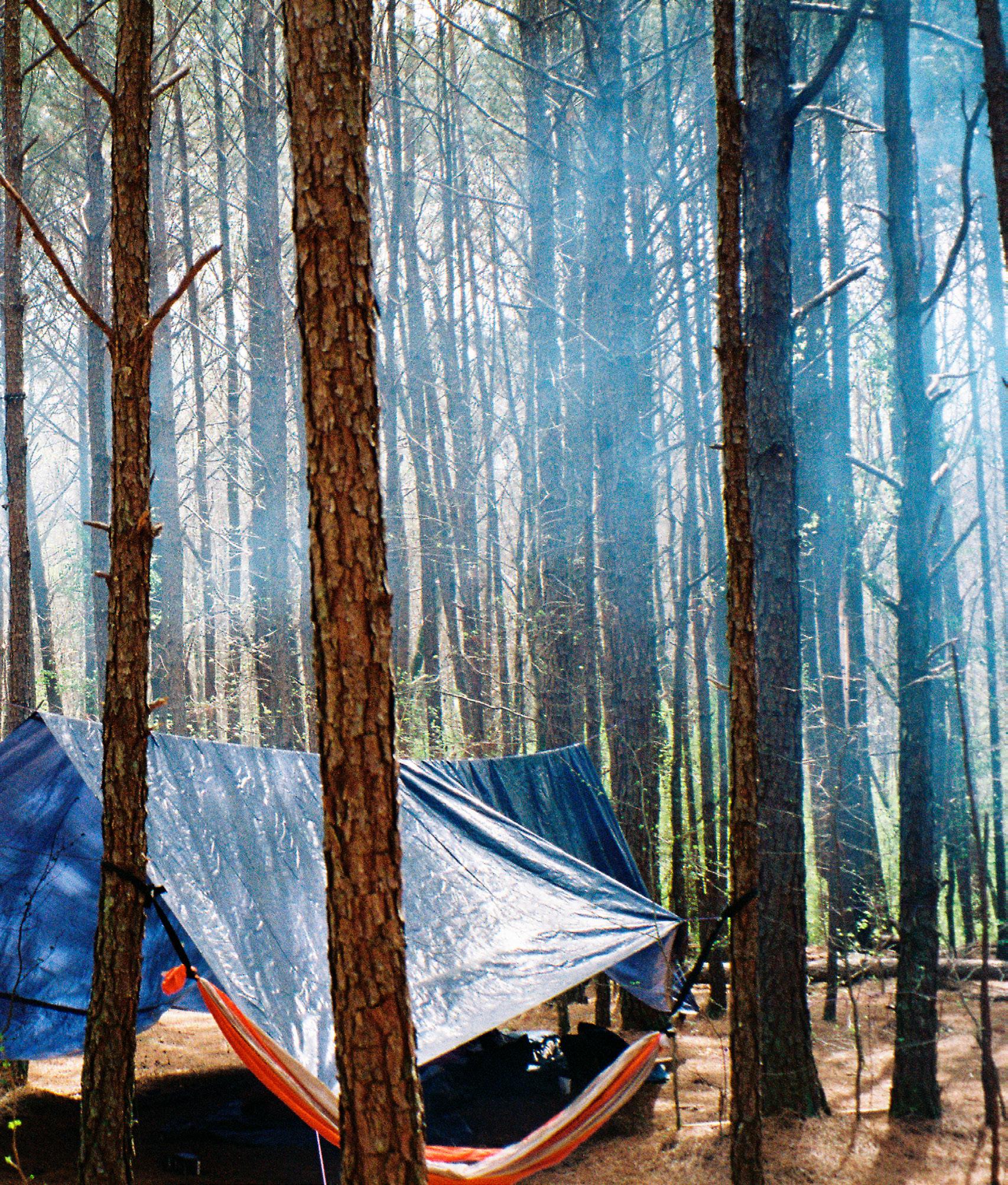


The people of Dekalb County and the City of Atlanta are in the midst of an enormous struggle to protect the Atlanta Forest—a struggle that has already spanned over two years. On a site that is home to one of the largest urban forests in the US within one of the nation’s most threatened watersheds, the Atlanta Police Foundation, in conjunction with the City of Atlanta, have proposed to build a militarized police training facility. The proposed facility is known colloquially as Cop City. Additionally, Ryan Millsap of Blackhall Studios is working to destroy an adjacent section of the forest in order to expand his media empire. Most of the forest would be completely removed in order to accomplish these developments. It is not unlikely that the entire forest would eventually be destroyed in conjunction with this development, though the current plans seem to obfuscate this reality.
We believe the fight to protect the 300acre Atlanta Forest from its destruction is a bellwether event for the global ecological movement. The stratification of the global conflict is laid bare on this site in a way that is unparalleled to any other contested site in the world. As we currently understand it, the conflict over the construction of Cop City reveals four primary strata of oppression that compromise the possibility for building a future that is equitable and ecologically sound.
Strata 1: Ecological Oppression
The Atlanta Forest represents a remnant of the vast woodland that once occupied the urban space we know as Atlanta. It is also a significant aspect of the South River watershed, which has been under threat for decades as a result of destructive practices in upstream extraction, poor waste management practices, and adjacent development. Not only does the remainder of the forest provide important habitat for the flora and fauna of this community, it also functions as the community sponge— absorbing and filtering the stormwater that would otherwise flood the community. Destroying a site of this ecological significance has extreme consequences for human and non-human communities in the vicinity.
Strata 2 & 3: Race and Class Oppression
The forest exists within a community that is primarily populated by Black and workingclass people. Forgoing the question of whether Cop City should exist at all, folks on the ground have made it clear that there are other sites where the facility could be constructed with fewer detrimental outcomes for both the environment and the community. Leadership has refused to consider other sites. This reality lays bare a brutal and bleak reality we are all too familiar with: the communities made up of people of color and the working class are targeted when it comes to the development of sites that will generate toxic pollutants, detrimental ecological impacts, and heavier police presence. What’s more, there is a proposal for police housing to be subsidized in the neighborhoods surrounding the forest, which would further increase police presence in the community.
BLUE HOLLERS IN THE SHADOW OF THE HOLOCENE ECOGRIEF 080
Strata 4: State Violence and Global Militarization of Police
State violence is the mechanism by which corporations and the state itself have chosen to accomplish their own economic and political goals. This is not democracy. With the above in mind, and in the wake of the police murder of Tortuguita, it is clear that state violence will continue to proliferate on this site in at least four ways: (1) Violence has been used in an attempt to enforce the destruction of this site, (2) officers will be trained in tactical violence on the site, (3) police violence will be promoted within the community as a result of the installation of Cop City, and (4) America’s police culture will continue to be exported around the world as governments send their officers to be trained in Atlanta.
Mergoat Magazine stands in full solidarity with the forest defenders. We stand in full solidarity with the activists working each day to protect this vital ecological resource. We stand in full solidarity with the surrounding community in Dekalb County as they oppose the construction of the proposed urban warfare training facility. We oppose the legal strategies being employed by the City of Atlanta and the State of Georgia against protestors. We reject the notion that the protests are violent. We reject the notion that the protestors are terrorists. We oppose the use of state-sponsored violence by police against the community and activists in Atlanta. May Tortuguita, the beloved one who died while defending one of our region’s treasured ecological resources, rest in power. May we all behold and learn from their strength, determination, and commitment to this important conflict.
In the following interviews, grassroots leaders from Atlanta teach us about the history and stakes of this conflict. First, Kathryn Kolb of EcoAddendum provides an ecological history of Atlanta, a place affectionately known as “the city in a forest.” Dr. Jacqueline Echols of South River Water Alliance provides a historical view of the South River watershed, eventually detailing the ecological and social stakes of the proposed development. Finally, Kamau Franklin of Community Movement Builders gives insight into the political dynamics at play in the conflict at large. We urge our readers to seek out these organizations, as well as the Atlanta Solidarity Fund and Atlanta Community Press Collective, to provide support to the movement.

MERGOAT MAG SPRING 2023 081
proposed cop city development
ECO-HISTORY OF ATLANTA’S URBAN FOREST WITH KATHRYN KOLB
 interviewed
interviewed
by Aaron Searcy
Aaron Searcy Could you tell us a little bit about EcoAddendum and your role there?
Kathryn Kolb I’m the executive director of EcoAddendum, and I’ve been designing and running our current program since 2013. It’s a small organization, and basically what we do is lead educational walks and outings in natural areas, both local and regional. We look at tree species and native plants and show how to read a forest’s history and ecology, just by looking at its species and growth forms. Our purpose is to show people the high value urban forest here, which makes Atlanta very unusual and perhaps unique among major cities in this country.
I’m also leading stewardship programs, which is working with a community or a municipality around a particular park or green space. It’s a year-long class, and what I do is essentially train an inner circle of community green-space leaders so they become experts in restoring that particular green space.
And then the other thing that I’ve started to do in the last few years is GIS mapping of parks and green spaces—doing inventories and writing
management plans so greenspace managers and volunteers have a good blueprint of what is in a particular park or green space, including species inventories, and a management plan of how to restore it.
A: You mentioned that Atlanta is relatively unique when it comes to its urban forests. How did Atlanta come to be called the city in a forest?
Kolb The story of Atlanta’s forest is rather interesting. This country was settled by Europeans coming from the eastern seaboard and moving west. A lot of our major cities in the eastern United States date back to the early 1600s, but the area that is now metro Atlanta was part of lands transferred at the Treaty of Indian Springs from the Muscogee Creek Nation in 1821. Metro Atlanta was mainly the territory of the Muscogee Creek, but the border was the Chattahoochee River, which runs as a diagonal across the top of Atlanta. Northern suburbs and exurbs would have been in Cherokee territory, but the main part of metro Atlanta would have been Muscogee.
Our area, our landscape, was mostly old-growth forest in 1821. There were some settlements, but these
were not widespread before the treaty. And the land lotteries took some time, so people didn’t really start cutting the trees and settle en masse so to speak until the 1830s or even the 1840s. That is really late in the game—nearly two hundred years after Harvard University was founded. At that point, it’s only a couple of decades until the Civil War. And of course, this area and the rest of the South was economically depressed after the war, so Atlanta was not really a destination until later in the twentieth century, after air conditioning came online in the 1960s. And at that point, people were no longer traveling by horse and cart—but by cars and highways. So when Atlanta does experience its first major building boom, it’s in a sprawl growth pattern.
The silver lining of that sprawl pattern for our forests is those steep slopes, narrow stream corridors and rocky outcrops were not desired for farming, and they weren’t desired for building. So as Atlanta experienced this big building boom, these little pockets of really high-value forest that go right back to Muscogee Creek days remained in many residential neighborhoods. People have oldgrowth forest remnants in their backyards all over metro Atlanta.
MERGOAT MAG SPRING 2023 083
Underpinning all this, we have an amazing network of watersheds here.
I mean every neighborhood has a series of creeks. We have three major watersheds in metro Atlanta, which is located on the Eastern Subcontinental Divide. Two of them go to the Gulf of Mexico, and one goes to the Atlantic Ocean. So we have tons of creeks and streams, and those narrow stream corridors were not desired for building or farming either.
The other thing that’s interesting about metro Atlanta is it’s a city of hills. So Atlanta didn’t really have that same kind of big farm, plantation

agricultural base that other parts of Georgia and the South had. A lot of the farms were smaller holdings, with lots of dairy farms. So our landscape wasn’t as impacted. With less row-crop farming, soils were less disturbed.
A: It really was a confluence of history and topography that made Atlanta the city in a forest. Can you describe what these ancient forest ecologies look like in Atlanta today and how you identify them?
Kolb One of the ways you can tell all those older forests is by tree diversity, which depends on the ecological niche.
Our mature forest is a hardwood forest often dominated by a variety of species of oaks. You’ll also have a lot of tulip popular, and hickories are also a big part of the older forest ecosystem here. Hickories grow very, very slowly. Oaks and hickories are most often on the dryer ridgetop sites.
In the flood plains, you’ll have more sweetgums, box elders, sycamores, and river birch. On moist slopes, you’ll start to find slow-growing black gum. You will also find some midstory trees such as sourwood, the native deciduous magnolias, and large beeches. Beeches also grow very slowly. You typically see them more in moist environments along creeks, but when you see big beech trees in a landscape, you know that you’re looking at old growth.
Everyone talks about how Atlanta has so many pines, but in our ecosystem, these are not the apex species. Pines come in after there’s a disturbance. So if you walk in a forested area and you see a whole lot of pine, what that tells you is that would probably have been a pasture or field in the 1930s. In any case, the landscape today is a patchwork quilt of more and less disturbed native forest.
The smoking gun of how we identify old-growth remnants is the plant communities under the trees. Certain kinds of plants—typically those
BLUE HOLLERS IN THE SHADOW OF THE HOLOCENE
Eastern Subcontinental Divide
regional watersheds
high-value spring ephemerals that everybody loves, trillium and bloodroot and things like that—whose seeds don’t travel. So if you’re looking at plants with seeds that don’t travel far from the mother plant, you know that those plants have been in those same soils for hundreds or maybe thousands of years.
I know it sounds kind of common to say it now, but all these things are interconnected in many ways that we don’t yet understand. There are relationships between certain types of plants, which have relationships with certain types of fungus that are having relationships with certain types of trees. And then of course myriads of other microorganisms are involved. So the forest itself—that rich, high-value, old-growth forest—is a community which depends on soils that are largely intact.
A: These remnants of old-growth forest may seem like something of a novelty, but could you describe some of the ecological services the forest is actually providing for the people of Atlanta?
Kolb Truly the forest is doing everything. Trees reduce stormwater runoff in about six different ways. A mature forest loses only about 2 percent of stormwater runoff in a storm event. If you have a park that a few trees widely spaced apart, and the grass is not a meadow but cut short,
the way they often are, that’s actually losing 70 percent of stormwater to runoff—70 percent is closer to cement than forest. What’s happening in metro Atlanta, and the reason we’re getting so much more flooding, is that Atlanta is converting forests and pervious areas to impervious areas at a very, very rapid rate. When you tear down that smaller house and build that bigger house, you’re grading the landscape, you’re turning what was wooded area into lawn, and you’re also just adding a lot of impervious material, whether

it’s in the driveway or the rooftop. It’s unsustainable in terms of the environment.
The forests are also very important to human health. Even if you never set foot in the forest but live within a half mile of a forest or green space, trees are producing chemicals that are called phytoncides, and some of those actually boost the immune system. If you live near a forest or green space, the health benefits can be the equivalent of $20,000 a year in income.
flood vulnerability in atlanta The Centers for Disease Control and Prevention (CDC) has developed a Social Vulnerability Index using demographic factors such as socioeconomic status, household composition and disability, minority status, and others. Higher vulnerability refers to conditions of exacerbated environmental stresses on human health and wellbeing.
MERGOAT MAG SPRING 2023 085
Eastern Subcontinental Divide
Cop City
South River Forest
So when we talk about community, the other thing about metro Atlanta is that some of the best forested areas are in communities that are primarily communities of color. When we talk about environmental justice in other cities and Atlanta, there are many areas where people of color are often living in areas such as near railroad tracks and landfills where environmental conditions are poor— but interestingly there are many communities primarily of African American folks that have very highvalue forest in metro Atlanta.

If you talk about taking those forests away as development increases, you’re actually taking away a health benefit that is already being
provided right now. Some of these communities do have people that are of modest means, so if you take the urban forest away, then you’re burdening people with extra healthcare costs, including increasing costs for public safety. When it’s hot in the summer, people are angry, so you may get extra encounters with the police. There are many, many ways in which being around healthy, natural spaces improves quality of life and human health.
The forest that has the highest ecological value—that has the oldest trees, best soil, the most plants, the best ecology—is also the one that’s serving the best benefits for green infrastructure and human health.
A: That runs a little bit counter to what I've heard some folks argue that old growth forests aren't quite as productive or valuable as younger forests. But it sounds like you're talking about productivity in a different sense. You're thinking about value and services that aren't being factored into the equation.
Kolb Actually, if you talk about ecology, the science is there. Older forests sequester more carbon. That idea that the older forests are kind of tired and aren’t doing as much is an absolute myth. That is a weird, human-centered thing going on.
BLUE HOLLERS IN THE SHADOW OF THE HOLOCENE 086
Every time I’m at a meeting and we have development community representatives, I can’t tell you how many times I hear ‘That tree’s old. It’s about dead. It’s eighty years old.’ If it’s as old as an old person, we need to do away with it. But trees don’t grow on that scale. There are water oaks, which are common in metro Atlanta, that are starting to have health problems at about 120, maybe 150, and they’re maxing out at about 200. But black gums are living 700 years or more. White oaks, five hundred years or more. Post oaks, five hundred years or more. Most of the overstory trees in our ecosystem, their natural lifespan is three hundred to six or seven hundred years. And no one is allowing them to live that long.
The whole forestry education system has been really geared towards the timber industry. People go to forestry school and learn how to estimate board feet. The reason that people are saying that a forest is maxing out at a certain age is because it’s not putting on more board feet fast enough. But that is actually not true. The fathers of modern forestry and the US Forest Service in North Carolina took meticulous records in the late nineteenth and early twentieth centuries, and they were measuring giant amounts of board feet that we don’t have today because the trees haven’t had time to grow that long. We’ll need to wait for five
hundred, six hundred, or a thousand years before we’ll see trees that look like the old-growth trees we cut. And we cut almost everything. The entire Southeast was pretty much cut between 1870 and 1920.
A: It's a similar story here in the Smokies. There's a lot of wonderful forest here, but in a sense, it's also a postapocalyptic landscape. Almost all of the Smokies have been logged, but it makes me wonder. Atlanta is pretty far south, but do you consider Atlanta part of the greater Appalachian system?
Kolb That’s a fascinating question. What I have found is that Atlanta seems to be a break point. In north Atlanta neighborhoods, on steep rocky slopes, you will find a lot of species that are common in north Georgia and up in Sandy Springs along the Chattahoochee corridor, but by the time you get down to the southern end of the city, where it drops down into the flatter, lower Piedmont, those species aren’t found. Atlanta is arguably at the end of the Appalachian system as you’re heading down into the Piedmont in Georgia.
ecological corridors in and around the south river watershed Ecological value in this case is based on occurence of interior forest cores, floodplain forest, wetlands, and mature soil composition.
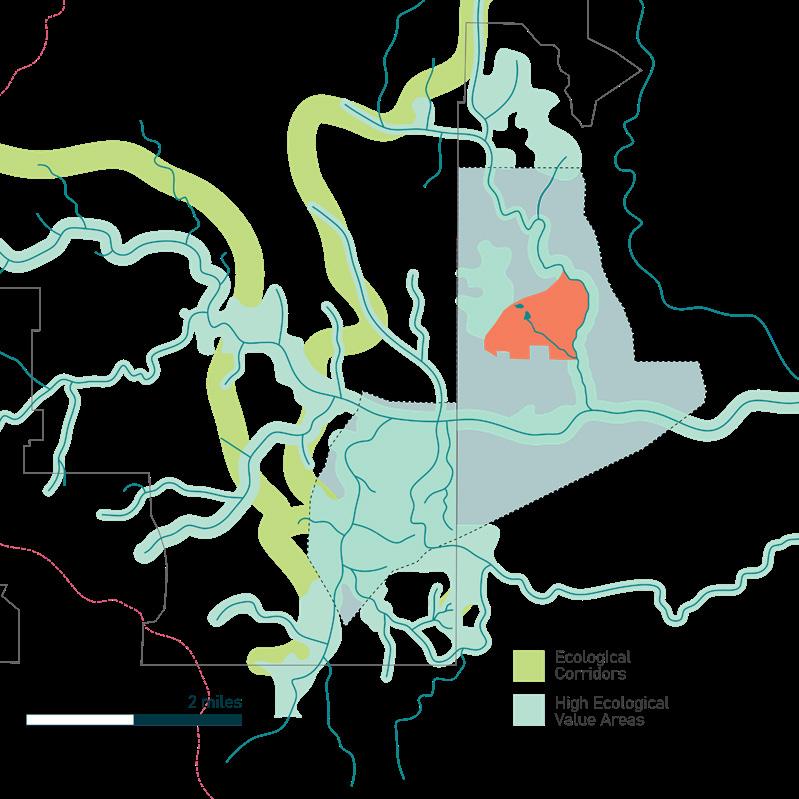
MERGOAT MAG SPRING 2023 087
Cop City
South River Forest
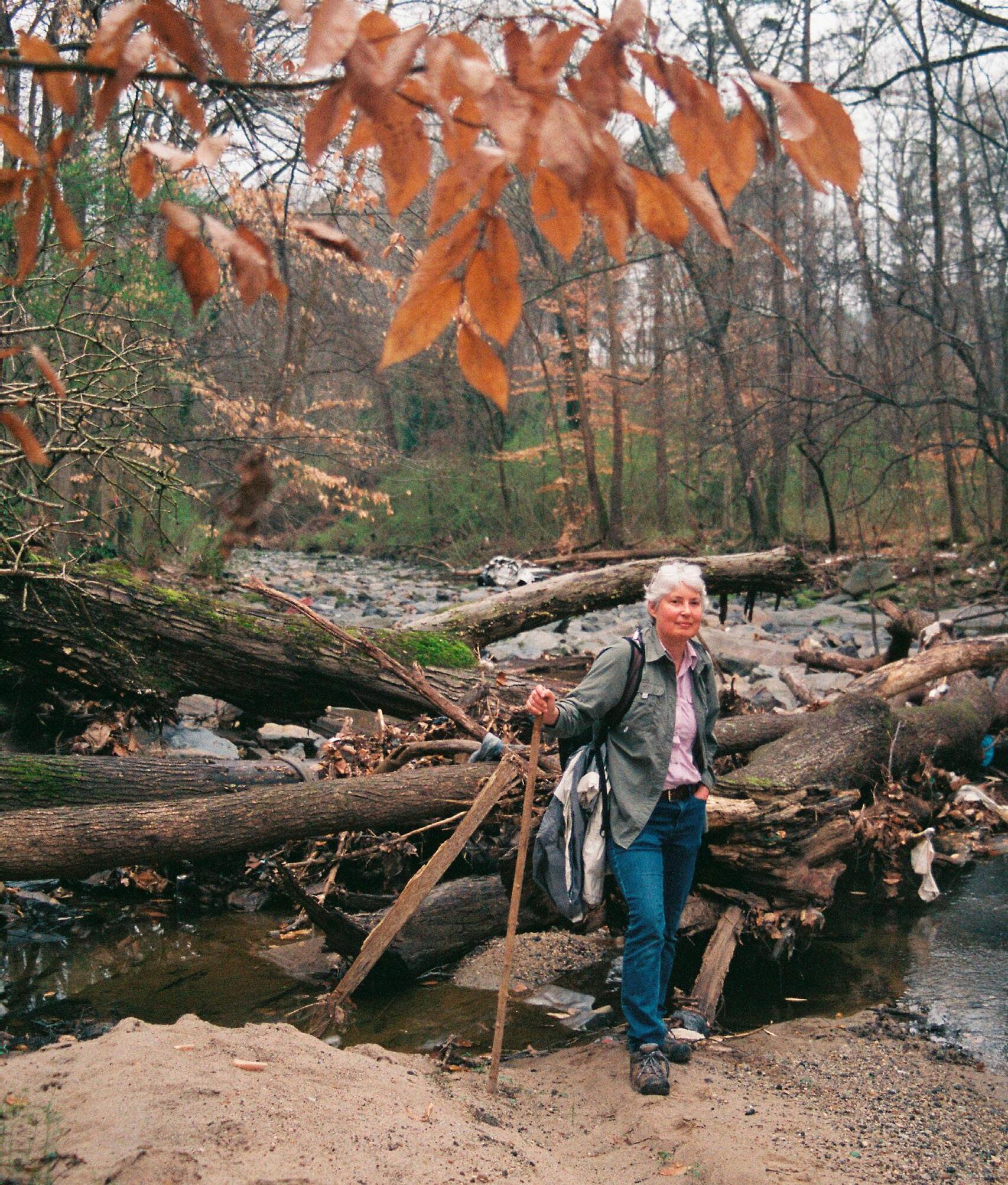
Rivers are conduits of ecology.
The other thing that’s very interesting about that, too, is that rivers are conduits of ecology. For instance, the Flint River south of metro Atlanta is bringing the Coastal Plain environment north and the mountains environment south. Mountain species are traveling with the Chattahoochee.

A: I've never heard that phrased so well, that rivers are conduits of ecology.
Kolb That’s true everywhere. You’ll find these wild mixes of species along river corridors where you wouldn’t otherwise.
A: So many cities across the South and Appalachia were built at the confluences of rivers. There's a lot going on there in these urban-ecological interfaces. Speaking of those, I understand you've worked with Atlanta's city council to develop the city tree ordinance. Would you explain how that functions on public, private, and commercial property?
Kolb So the way the tree ordinance functions right now is that, if you are a private property owner, you can’t just cut down a tree because you just want to cut it down. You have to have a reason, then you can get a permit to cut that tree down. However, if you sell your property and a developer buys it, the developer can cut down any trees that they want.
MERGOAT MAG SPRING 2023 089


So trees are basically protected once you own the property, but when the property is being developed, they’re not protected, which is a problem.
One thing we have in our tree ordinance that’s special in the city of Atlanta is an appeals process. If a developer buys a property, and they want to cut the trees down, and you live next door, you can actually appeal that on certain conditions, and sometimes you can get some of those trees protected. But the city typically signs off on widespread cutting and clearcutting of trees. They’re not necessarily supposed to do this, but they typically allow anything that a developer wants to take down.
The reason that this is happening isn’t because people just want to cut down trees. It’s because the real estate values in greater metro Atlanta are very, very high. So those older, even nice, modest-sized houses are being torn down, and they’re putting up much larger houses. When that happens, they grade the entire lot, which is the way the building trends have shifted.
One reason Atlanta still has so many trees is because, when homes were built before the 1960s, before air conditioning, people wanted big shade trees in their yards. It’s hot down here. So what would you do? You would clear a little area for your
house footprint, build a foundation, and then build a house on that foundation. You didn’t grade that whole lot, so many properties still have original soils and old-growth forest remnants. They’ve been standing there, some of them, since the late 1800s. Some of them longer.
A: What roles or responsibilities do city governments have when it comes to managing urban forests? Do you feel like ordinances are the most effective tool?
Kolb Ordinances are really critical. I go to a lot of conferences on sustainability that talk about how important forests are—everybody gets a box lunch, there’s a cup of coffee, and everyone walks away fired up. But the ordinances on the books that people actually live by are coming out of the 1950s. So we have all the science, we have all the data, and we know that we need to create systems that integrate nature—it’s healthier for us, it’s healthier for the landscape, it’s creating sustainability and resiliency. But ordinances are complicated. People are bored when they read them. They don’t really want to deal with it. And the people who are financially benefiting from very weak ordinances are usually the only ones at the table, because they have a financial stake in the outcome.
What I’ve been trying to do is bring those things together. We’re not going to save every tree: that’s not the goal. The goal is to create a balance. Yes, people need to cut down trees to build houses, but we can’t cut them all down. And what’s happening now is we’re cutting down most of our trees. That’s not sustainable. We can do better. The suggestions that I’ve made are actually pretty modest at the end of the day, and they’re doable. We need to do the things that are practical, and we need to have a willingness to do them.
If you buy a car, it has to have an airbag in it, right? When airbags first came online, car companies spent millions and millions saying we can’t have airbags because the cost of cars will go up. We won’t be able to sell our cars, et cetera. The government said, ‘Well actually, we think you can do it, and we do need airbags, and we need to protect our people. So we think we’ll go ahead and require those airbags, and you figure out how to make it happen.’ And they did, and it works—we now have safer cars, and the industry is still making great profits selling them.
This is kind of similar. We can’t afford to lose all of our trees. We still need to earn money making houses, and we think there’s a balance. The role of government is to ensure that balance is there.
BLUE HOLLERS IN THE SHADOW OF THE HOLOCENE ECOGRIEF 092


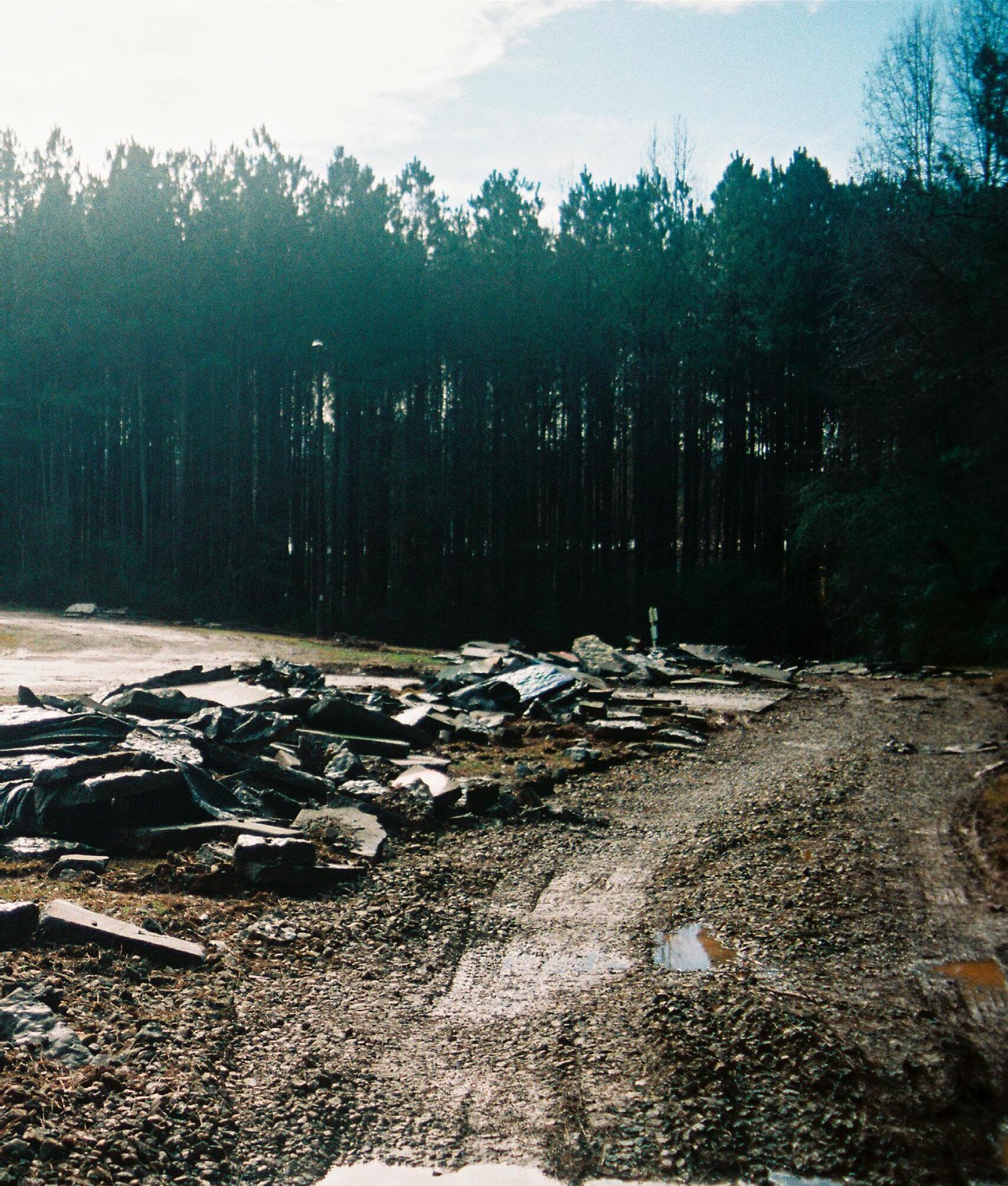
ENVIRONMENTAL JUSTICE IN
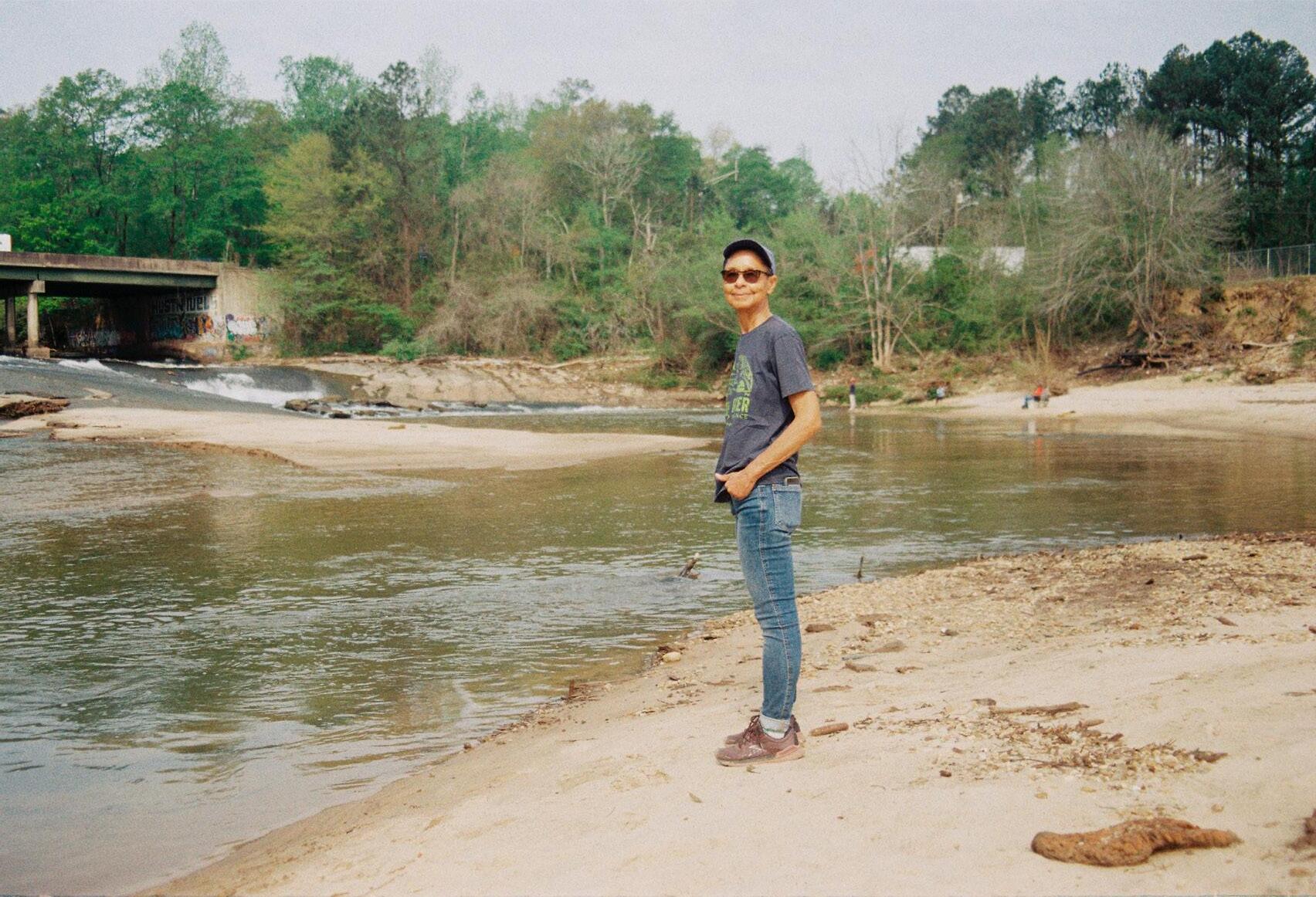
SOUTH RIVER WATERSHED JACQUELINE ECHOLS
interviewed by Sorrel Inman
THE
Sorrel Inman What brought you into the ecological activism you have been doing in Atlanta for so many years?
Jacqueline Echols My involvement in Atlanta’s environmental issues began in 1997 while I was a graduate instructor at Clark Atlanta University in the Public Administration Department. During that year, the City of Atlanta entered into a federal Clean Water Act consent decree with the Environmental Protection Agency (EPA) and the Upper Chattahoochee Riverkeeper.
This consent decree is a legal action taken by the EPA to compel a municipality to comply with the Clean Water Act (CWA). This action required Atlanta to stop polluting the Chattahoochee River with sewage from its combined sewer system—an antiquated wastewater system where sewage and stormwater are collected in the same pipe when it rains and discharge into local waterways. These sewage discharges receive minimal treatment and oftentimes bypass treatment altogether. Combined sewer systems are a relic from the past, built in the 1800s to carry sewage away from Atlanta’s growing “urban” area. The South River was Atlanta’s first combined sewer. Municipalities, like Atlanta, are allowed to continue operations with the caveat that discharges do not violate water-quality standards, which can trigger a response from the Georgia Environmental Protection Division (GA EPD).
Given the number of Clean Water Act violations that occur nationwide each year, a consent decree usually happens only once in a lifetime. I became a member and principal spokesperson for the Clean Stream Task Force (Task Force), a community-based group of environmental volunteers, in 1998. The Upper Chattahoochee River consent decree was viewed as an opportunity to force Atlanta to replace its polluting combined sewer system with a modern, twentyfirst-century separated (two-pipe structure) system that captured stormwater in one pipe and sewage in another.
The South River was not the focus of the Riverkeeper consent decree even though Atlanta’s combined sewer system also discharged into the river. South River Water Alliance’s (SRWA) involvement brought much-needed attention to the plight of the river, which had up to this time been ignored by the state’s environmental regulatory enforcement agency.
There are many, many Clean Water Act violations that take place across this country each year, and many have persisted for years, even decades, before resulting in a federally backed legal challenge. In 1997, Atlanta operated approximately nineteen miles of combined sewer, and their initial plan included zero sewer separation.
The majority of the combined sewer overflow discharges from Atlanta’s system were released into streams that flow through predominantly Black low-tomoderate-income communities in both the Chattahoochee and South River watersheds. Redressing this environmental justice issue became the focus of the Task Force’s advocacy, with the goal of separating all nineteen miles of combined sewer and replacing it with a modern twopiped system.
At the end of several years of direct action and indirect advocacy, the EPA agreed that the Task Force’s environmental justice claim of disparate impact on communities of color was substantiated. However, the agency declared in its infamous July 20, 2001, letter to the Task Force that these impacts were “justified.” This ruling effectively meant that Atlanta did not have to consider environmental justice impacts when developing its plan to meet the requirements of the consent decree. Effectively getting the green light to continue operating its combined sewer system without even considering any sewer separation. Fortunately, the EPA’s decision was countermanded by a followup decision by the Department of Justice requiring Atlanta to separate 50 percent of its combined sewer system in environmental-justice communities. Today, only nine miles of this antiquated system remains.
MERGOAT MAG SPRING 2023 097
S: What gave rise to SRWA? Was there a specific event that led to its founding? What have been some important milestones along the way?
Echols In 1999, the call to action for the newly organized SRWA was in response to the looming crisis surrounding one of the seven landfills scattered throughout the communities near the South River. Live Oak Landfill had reached capacity and was scheduled for closure until the owner decided to seek permission from the state’s environmental regulatory agency to expand the facility. Receiving assistance from Green Law, a probono environmental law firm, SRWA won the fight, and the landfill was finally closed in 2002.
The South River is sixty miles long, beginning to end, and is hardly noticeable on a state map. The river has never met state water-quality standards until 2022, when SRWA forced the issue with GA EPD through the federal Triennial review process mandated under the CWA. This review requires that states manage waterways, including water quality, based on how citizens use it. As a result, thirteen miles of the river were approved for recreation for the first time ever.
The South River has benefited from the strengths of early grassroots community advocacy and the community–river connection that
clearly linked the health and welfare of neighborhoods along the river to the river itself. Early relentless and unchecked degradation of the South River has done more to weaken the fabric of support for the river than any other factor. The history of degradation has created a ‘culture of avoidance.’ Today, the belief that the river should be avoided poses the greatest threat to its recovery because recreational use helps to strengthen a sense of relationship between the community and the river, an essential component for motivating the improvement of water quality.
The earliest opportunity for SRWA to engage in real and effective collaboration in support of the South River followed closely on the heels of the landfill closure with the establishment of a task force led by the DeKalb County CEO’s office. Their charge was to make recommendations concerning the restoration of the river that coincided with a US Army Corps of Engineers study of the river and several of its tributaries that began in 2002 and was to continue through 2010. The Indian, Sugar, Intrenchment, and Snapfinger Creeks Ecosystem Restoration Project was commissioned to improve these aquatic ecosystems.. To date, the first two phases of the study— reconnaissance and feasibility—have been completed. The remaining phases—project authorization by Congress, plans and specifications, and construction—are on hold.
The Corps’ study was suspended in the spring of 2010 due to internal turmoil. As a result, DeKalb County decided to pull out of the study. Today, the study remains at a standstill, though there seems to be interest in its revival.
In 2011, SRWA was allowed by the federal court to intervene in the recently approved DeKalb County consent decree negotiated between the county and the EPA, mentioned above. This legal action was taken to ensure “standing” in the event SRWA decided to pursue further legal action at the end of the ten-year consent order. Pollution of the river began in the early 1960s and continued for fifty years, with little notice or action by the Georgia Environmental Protection Division or the EPA. If history repeated itself and regulatory agencies continued to fail, SRWA would be the river’s only hope.
S: Can you provide a history, as you understand it, of the large forest remnant that is under threat?
Echols The Old Atlanta Prison Farm was an abandoned 300-acre city-owned prison complex in southeast Dekalb County. Over time, the land has been used for several purposes including farming. From approximately 1920 to 1990, the land was worked by prisoners to produce food for the region’s prison system.
BLUE HOLLERS IN THE SHADOW OF THE HOLOCENE ECOGRIEF 098
local watersheds Intrenchment Creek and the South River relative to the rest of Atlanta’s watersheds and the proposed site for Cop City.

In urban areas, people do not exist separately from their environment—the two are inextricably linked. The forest and surrounding communities live together in an environmentaljustice milieu. The threat to the forest today that has captured the attention of the world originates from a pattern of historic environmental and social injustices that center on the South River and the river's major urban tributary, Intrenchment Creek.

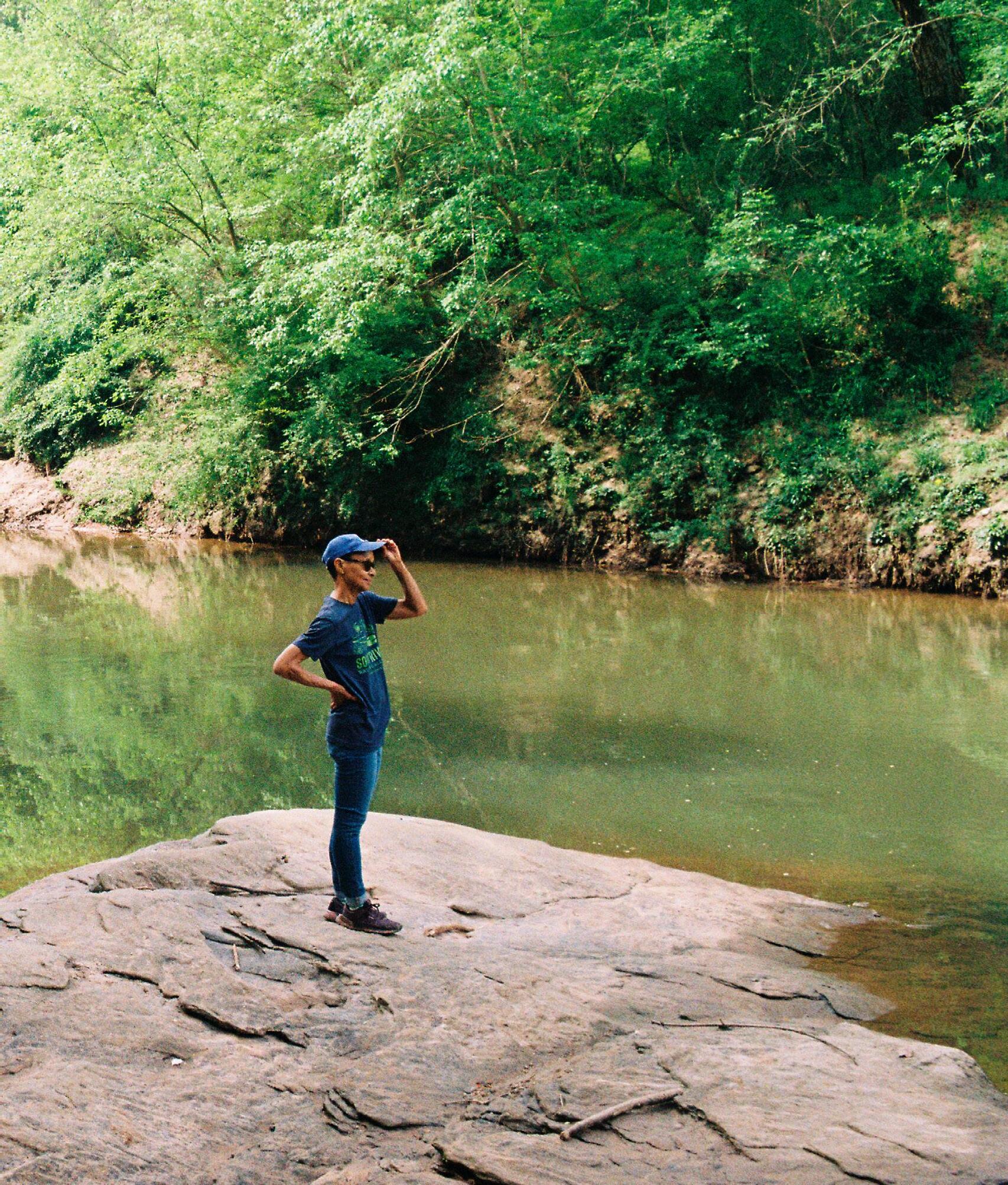
Today, the site is a “recovering,” or successional, forest that reclaimed the land after the correctional facility was closed. In recent history, the site has been used as a training ground for the Atlanta Police Department for target practice and practice handling and detonating explosives. As one might expect, the lack of care and respect for the greenspace has also invited other degrading activities such as illegal dumping.
Likely the earliest effort to draw attention to and protect the site was in 2016. An initiative called Save the Old Prison Farm was an effort organized online and led by several southeast Atlanta residents who used the site for recreation on a regular basis and recognized its value.
In 2017, the Atlanta City Council voted unanimously to adopt the Atlanta City Design: Aspiring to the Beloved Community into the Atlanta City Charter. This plan envisioned the establishment of a public space referred to as South River Park. The plan included the creation of a 1,200-acre open space that would incorporate the prison farm. It is important to note that both of Atlanta’s rivers—the Chattahoochee River and the South River—are included in the Aspiring to the Beloved Community plan, but with entirely different outcomes. The Chattahoochee project, where a more affluent population lives, is moving ahead, while the South River project,
where neighborhoods are home to poorer and marginalized people, has been left behind.
S: Building on that, could you describe the evolution of the two separate developments now threatening the Atlanta Forest and Weelaunee People's Park (Cop City and Ryan Millsap's)?
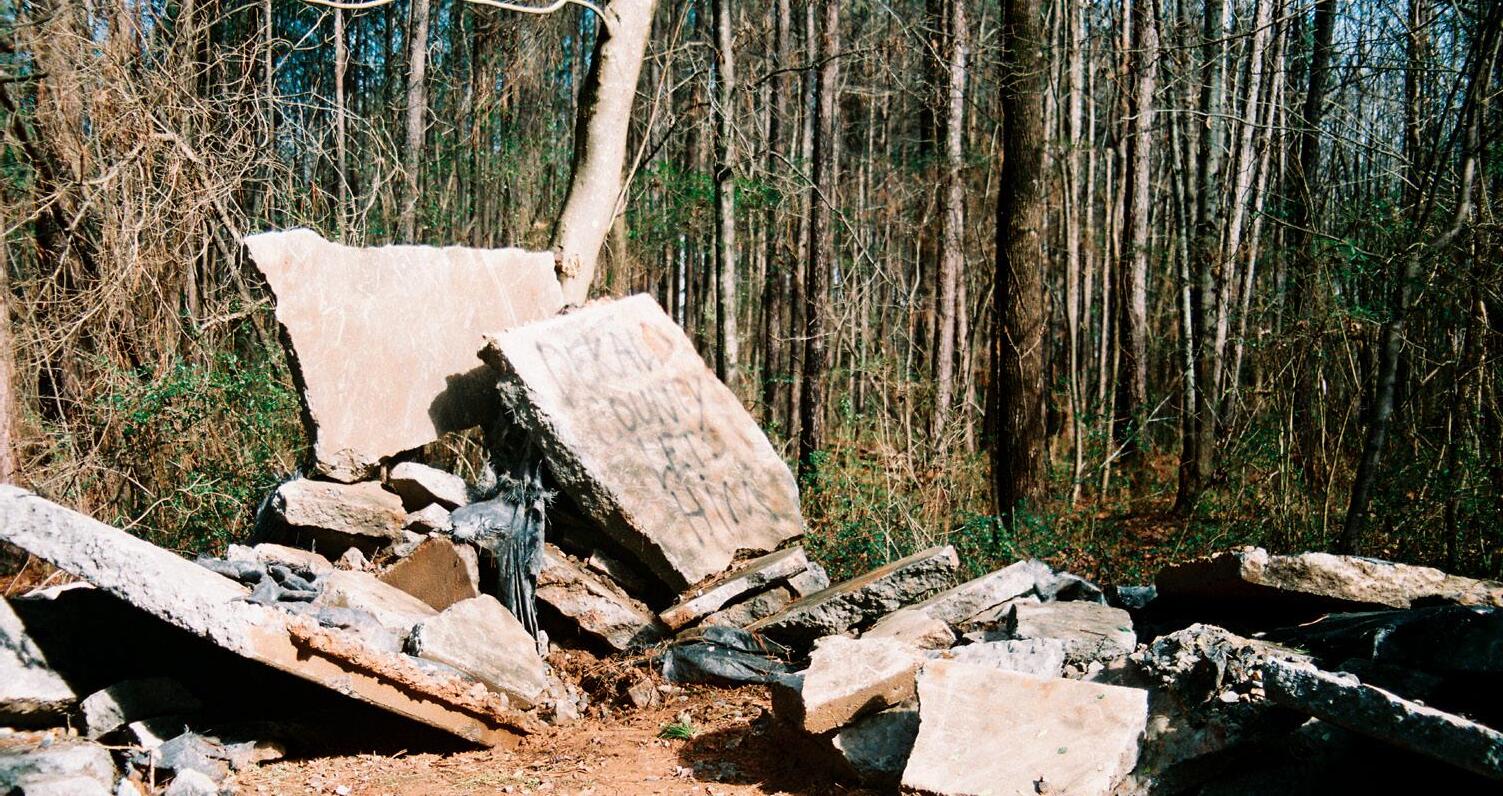
Echols These two developments [Cop City and Blackhall Studios] almost occurred in tandem. They did not evolve or develop gradually; they happened over a brief ten-year period.
The 2010 DeKalb County federal consent decree does not impose a deadline for DeKalb County to stop sanitary sewage spills in “non-
IN THE
OF
102
BLUE HOLLERS
SHADOW
THE HOLOCENE
priority” areas primarily concentrated in predominantly Black south DeKalb County. The consent decree does contain a deadline to repair the sewer system in predominantly White “priority areas.” This denial violates the 1972 Clean Water Act, the 1964 Civil Rights Act, as well as equal protection under the law. Building on the momentum provided by the consent decree debacle, the threat to the South River Forest (Atlanta Forest) and Weelaunee People’s Park is not at all surprising. The chain of decisions leading from the county’s initial disinvestment to the emergence of Cop City and Ryan Millsap’s Blackhall Studios provides a vivid example of how vulnerable and resource-deprived communities
can be quickly consumed by inequity. These communities are the least able to fight off such acts of violence.

In 2020, DeKalb County executed a land swap, which gave forty acres of Intrenchment Creek Park’s (ICP) 136 acres to Blackhall Studios. Intrenchment Creek has been an integral part of the county’s greenspace plans, previously described to a potential funder as “satisfying the need for much needed open space for park land as well as protection of an important tributary to the South River.” The description continued, “Given its location on Intrenchment Creek and the shortage of expansive property remaining in this area, the County considers this site to be extremely important.” The
greenspace that became ICP was purchased in 2002. In a moment of cruel irony, the county used its own twenty-year failure to invest in the park and the surrounding community as justification for the swap.
The potential loss of ICP was compounded in 2020 when the City of Atlanta authorized the construction of a police training facility on eighty-five acres of the prison farm greenspace. Reportedly, discussions between the City of Atlanta and Atlanta Police Foundation began in 2017. The handling of the circumstances surrounding the death of Rayshard Brooks by Mayor Keisha Lance Bottoms in 2020 strained the city’s relationship with the police force and police union. The gifting
103
of the city’s largest remaining public greenspace to the Atlanta Police Foundation was viewed as an effort to help mend the rift and improve police morale. In 2022, a review of the land disturbance permit by South River Watershed Alliance submitted to DeKalb County for approval revealed the 85-acre site had morphed to 171 acres, more than double in size and consuming more than half of the 300-acre greenspace. This enormous increase is not authorized by and is inconsistent with the ordinance passed by the Atlanta City Council. These land transactions threaten the two largest contiguous parcels of publicly owned greenspace inside I-285, the interstate system that encircles Atlanta.
S: What connections, ecological and/or social, led to SRWA being a leading voice in the opposition to Cop City?
Echols When tackling an issue like environmental justice, perspective accounts for a lot, if not everything. It is much easier to fight for an issue that you believe in because you understand it as a result of lived experience—in other words, from the inside out. In reality, the right to a safe and healthy environment exists more for some and less for others. Disparities persist. Inequities are likely to be more prevalent in urban areas where people are more concentrated, especially poor and marginalized populations.
For more than six decades, public outlays or investments in upper South River communities have been minimal. However, in a relatively brief ten-year period (2010–2021), they have been denied or stripped of their most lucrative public assets. Disinvestment of this magnitude exacerbates inequality and threatens to undermine any possibility of sustainable economic or environmental recovery these assets could have provided. The role of government in fueling and promoting actions that result in discrimination and injustice, at this level, sends a disturbing message relative to the ability of these local governments to act fairly, equitably, and in the best interest of all citizens.
In urban areas, people do not exist separately from their environment— the two are inextricably linked. The forest and surrounding communities live together in an environmentaljustice milieu. The threat to the forest today that has captured the attention of the world originates from a pattern of historic environmental and social injustices that center on the South River and the river’s major urban tributary, Intrenchment Creek.
One of the main purposes of government is to address problems of fairness or access experienced by citizens. This mandate would seem to focus the support of the City of Atlanta and DeKalb County on disadvantaged areas, particularly given the racial makeup of
constituents and political leadership. However, this has not been the case. There has been and continues to be significant gaps between the recognition of need and formulation of investment policy to address that need. It bears emphasizing that the main source of threats has not been from private development, which one might expect, but local government. The opportunities that were seized upon the Blackhall Studios (Ryan Millsap) and the Atlanta Police Foundation would not have been possible without the consent and acceptance of the City of Atlanta and DeKalb County.
Even as the South River, designated by American Rivers in 2021 as one of the ten most endangered rivers in the United States, stages a comeback, unprecedented governmentsponsored disinvestment by the City of Atlanta and DeKalb County threatens any hope of revitalization and recovery. These assets are colocated, increasing their collective positive value for the community. On the other hand, it also intensifies their vulnerability to the negative “ripple effects” of disinvestment. The loss of a single community asset of this magnitude is rare. The loss of three in such close proximity to each other is inconceivable, unjust, and will result in irreparable harm.
IN THE
OF THE
ECOGRIEF 104
BLUE HOLLERS
SHADOW
HOLOCENE
S: Building on that, what services does this large forest remnant provide for the community in terms of stormwater absorption, habitat, community health, or any other benefits? Could you summarize the ecological stakes pertaining to the destruction of the Atlanta Forest for the infrastructure proposed by APF, APD, and the City of Atlanta?
Echols Health disparities in environmental-justice communities are well documented and relate to disproportionate environmental costs such as water and air pollution, lead contamination, heat-island effects, ozone smog, and other hazards. Surrounding neighborhoods are already burdened with pollution from countless “big rig” and numerous other land-based trucking and hauling businesses that wreak havoc on air quality. The City of Atlanta has not addressed, in any meaningful way, the compounding of negative health impacts related to the training facility and the loss of tree canopy on surrounding communities. Both the City of Atlanta and the Atlanta Police Foundation are fixated on mitigations—specifically, the claim of replanting 100 trees for each tree destroyed and the absence of “old growth” trees on the site as the litmus test for preservation. Neither of which addresses the inevitable community-health impacts in any way.
heat-island effect vulnerability The Centers for Disease Control and Prevention (CDC) has developed a Social Vulnerability Index using demographic factors such as socioeconomic status, household composition and disability, minority status, and others. Higher vulnerability refers to conditions of exacerbated environmental stresses on human health and wellbeing.
Additionally, the total acreage of the prison farm site (297 acres) and contiguous Intrenchment Creek Park (136 acres) greenspace is the largest remaining parcel inside I-285, the interstate beltway around Atlanta. The tree canopies located within the South River Park and Chattahoochee River Park are described in the Atlanta City Design: Aspiring to the Beloved Community plan as equivalent to Atlanta’s lungs and the last big greenspaces to save. The excerpt below is from an August 22, 2022, follow-up letter to the chairperson of the board of directors for Cox Enterprises. It puts into perspective the tenuous relationship
decision makers, both public and private, have with the environment that protects southeast Atlanta.
The justification for clearcutting the Prison Farm Forest, destroying thousands of trees, is that the forest contains only “one” old-growth tree. Any discussion related to the protection of trees in Atlanta, on this site or any other, extends far beyond focus on a single tree, regardless of size and age. Climate change is destroying our air and water, both of which we need to survive. At present, our best defense against a future of worsening environmental ruin is to stop the destruction. Atlanta’s rapid pace of unbridled development is razing substantially more trees than are being
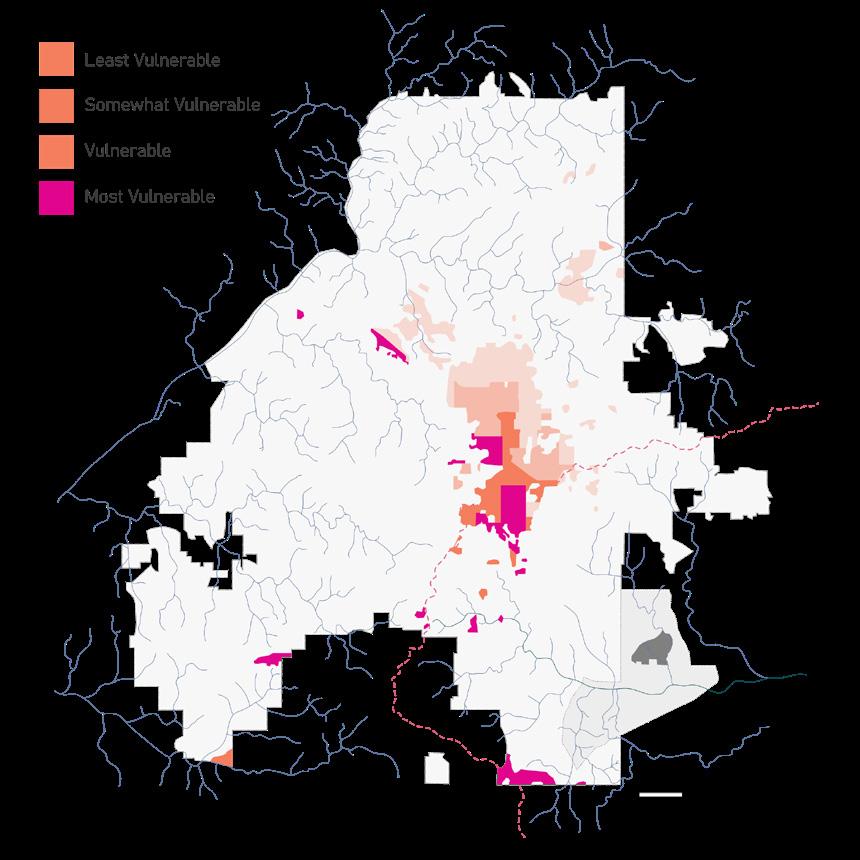 Cop City
Cop City
MERGOAT MAG SPRING 2023 105
South River Forest
replanted. The vast majority of trees are being replaced by saplings, which will meet old growth status in 100 years, if they are lucky and not cut again in the meantime. There is much concern over the number of trees the city loses to development each year—approximately 6,000 to 8,000 healthy trees per year—with FY 2021 being the highest to date with approximately 8,000 healthy trees cut. In FY 2022, that number jumped to 13,440 healthy, non-hazardous trees removed for development, an astounding number (Atlanta City Planning Department website). The development of the Prison Farm site alone will destroy many, many hundreds of healthy trees. If all we protected was old growth forest, we would have virtually nothing left. The successional forest at the Prison Farm provides significant ecological value, wildlife habitat, and riparian buffer that protects Intrenchment Creek. Let us not lose sight of the fact that the entire Appalachian Forest was timbered at the turn of the century. When not covered in concrete, a forest grows back.
Wildlife and their habitat have benefited enormously from the South River’s obscurity and endless bouts with pollution, which discouraged human interaction. The river’s longstanding pollution issues also curbed interests in downstream development as well, thus enabling habitat to flourish, creating a fifty-mile wildlife corridor along the South River from the Atlanta Forest to Jackson Lake where the river ends. Today, innumerable species of terrestrial, aquatic, and bird life inhabit and
use the connectivity of the river and Intrenchment Creek to safely navigate up and down the river—making the Atlanta Forest an excellent setting for viewing wildlife. The planned development of the Atlanta Forest will destroy this urban-most habitat.
S: Could you describe the sociopolitical stakes pertaining to the destruction of the Atlanta Forest and the development of Cop City? Earlier, you mentioned disinvestment to describe the racism at the heart of the push to build Cop City on this site. Can you expand on that by providing specific examples of how the eventual execution of this project would lead to outcomes that represent environmental racism?
Echols As a political scientist by training, I have learned that the simplest way to describe and understand politics is to explore who gets what, when, how, and why—with the greatest emphasis being on who and why. In politics, affluence equals influence—and nothing is more political than the environment. If you do not live in a community, it is easy to be cavalier about what happens there. Nevertheless, for the people who do live there, it’s personal, very personal. It is easy for outsiders to tout environmental mitigation instead of protection. The Atlanta Police Foundation and its rich benefactors have done this as they parrot the
ridiculous notion of planting 100 specimen trees for every one tree destroyed as suggested by the mayor’s office. The same government officials suggest that community members for whom the majority of personal wealth is invested in their homes support destroying the very environment upon which that wealth is based. Where is the model that supports the notion that a healthy thriving community can co-exist alongside a disruptive and environmentally destructive police training facility that will redefine health, welfare, and quality of life for residents 365 days a year, turning it into a living nightmare? And would this idea be proposed, much less considered, anywhere else outside of this environmental-justice community? More to the point, would it be considered in the wealthy community of Buckhead or anywhere west of downtown Atlanta?
Environmental racism is the unequal impact of environmental hazards on Black and marginalized communities. The police and fire training facility will be used to train recruits and existing police and fire personnel that protect and serve communities, not only within Atlanta, but also from across the country and world. Yet the impact of this facility will be borne by a single environmental-justice community.
Environmental restorations have both social and political implications. Environmental amenities such as
BLUE HOLLERS IN THE SHADOW OF THE HOLOCENE ECOGRIEF 106
greenspaces, rivers, and streams offer unmatched opportunities for revitalizing neighborhoods subjected to environmental injustice. More than any other factor, governing bodies strategically characterize natural areas as “degraded” in order to undermine efforts to protect and restore those areas. This is not only the case for the prison farm greenspace, but it is equally true pertaining to the decades of environmental degradation from south Atlanta to south DeKalb County. Environmental restoration can become the catalyst for revitalizing neighborhoods that have been subjected to environmental injustice.
Historical inequities are indelibly inscribed into the Atlanta Forest landscape and the communities that are a part of this geography. Disparities in the distribution of environmental amenities are a well-known and documented issue in vulnerable and marginalized neighborhoods. This reality has been unaffected by the color of those wielding political power and/ or influence in Atlanta. As a matter of fact, this is an issue wherein one might expect a decidedly different perspective, commitment, and outcome given the decades of Black political leadership in the City of Atlanta—one that addresses environmental and social-justice issues. To date, there is not an ordinance, resolution, or statement that has emerged from the city council or mayor’s
office acknowledging race-based disparities, nor support for achieving environmental-justice goals, despite their popular support within the community.
If you care about the environment, people, communities, ethics, right and wrong, equity, justice, dishonesty, exploitation, the greater good, political arrogance, or corporate money on steroids— just to name a few—this is your struggle. I think many people, particularly those living outside of Atlanta, are surprised to find that these issues not only exist but to this magnitude in the “city too busy to hate.”
One does not have to be an environmentalist activist to find a comfortable place of resistance in this fight.



STATE VIOLENCE IN THE CITY OF TREES

KAMAU FRANKLIN
interviewed by Kathryn Gruszecki
Kathryn Gruszecki Hi Kamau, you are the founder of the Community Movement Builders, which aims to serve Black and working class communities through activism and programs working against gentrification, displacement, and over policing. For example, Community Movement Builders has a program called the Black Panthers Veteran Fund, working to distribute funds to those who were once active in the Black Panther movement. More recently, CMB has been a significant voice in opposing Cop City. Prior to CMB, you were a practicing attorney in New York City. Would you care to share more about your personal background and what led you to founding the Community Movement Builders in Atlanta?
Kamau Franklin One of the things that first got me thinking about being an organizer was just thinking about how the world works—hearing my mother tell stories about growing up in Jim Crow’s Charleston, South Carolina. My mother had a scar on her back until the day she passed from when she was chased out of a Whites’ only playground. She was too slow and was hit in the back. And hearing those stories about the South, and then growing up in Brooklyn projects in the seventies and eighties, it just gave me a certain perspective about why this poverty exists, where
it exists, how it exists. It got me into reading, watching documentaries. I read a lot in the eighties, you know, about Malcolm and organizing in the sixties and seventies. It really started getting me involved in different organizing groups.
G: Who are some of your contemporary or historical political influences? I know you mentioned Malcolm X. I'm also curious how their teachings have influenced your political practices in opposing Cop City.
Franklin Well, historically, like you said Malcolm X. Also historically, members of the Black Panther Party, members of the Republican New Africa, when I was younger and still today. But, when I was younger, being in New York, I got to meet a lot of the veteran panthers, when they were in their forties and fifties. Also, we did a lot of visits with folks who were political prisoners in New York state prisons. You got to hear about the politics, about the times, about the conversations they were having, and I think that was extremely influential for me—to understand the struggle for power in Black communities. You know, it’s not just about voting. It’s not just about being allowed into certain institutions which are mostly White. It’s really about fighting
oppression through having power and fighting for power. And that means having control over institutions in the community, having control over the politics of the community. All of that stuff has continually influenced me when it comes to the work I do today, in particular.
By my reading, and the meetings with people I’ve had, that really helped me think about what the roles of the police are in our community. The issue is never about whether or not the police officer individually is a nice person or a bad person, whether or not there’s a bad apple, whether or not you can cure things through training. The issue is really about the role of the police in the larger Black community. The role of the police has been, and continues to be, to control that community, to harass that community, to use that community in terms of excess labor, for jail and prisons, to criminalize that community.
This all comes out of the historic role of slavery in America. But, the police, in addition to that, are protectors of private property. Combining those two things has helped me see that this is not about bad apples, but this is about how policing is used. Basically it is a public army that is used for private interest against our communities.
MERGOAT MAG SPRING 2023 111
G: You once mentioned the implications of Cop City being international, can you elaborate on that? Why should those outside of Atlanta be concerned with Cop City?

Franklin Well people have to remember that this will be one of the largest police training facilities in the
country, if not the largest. Atlanta is no bigger than the twentieth police department in the country. They’ve already shown in their own documents that part of how they plan to use this center is to train police from across the country…43 percent of the police officers they plan to train will be out of state. And in addition to that, Georgia/Atlanta police
already have a working relationship through an organizational apparatus called GILEE, in which they receive and I guess give training to Israeli police. So, Israeli police come here frequently to do training exercises with the Atlanta Police Department. There is no doubt in my mind that this huge facility will be a place where that training continues, and
again we already know that some of this training is going to happen with police outside of Georgia.
In my estimation we’ve already had militarized police in this country, but this is a step further. Not only is it gonna be militarized, but there’s going to be a sense of a nationalized police ethos—where police are
coming to train together, they’re coming to learn tactics together, they’re coming through a similar ideological lens that will not change in terms of how they think about movements and uprising that have challenged police power and police violence but also how they think about everyday citizens.
So, I always stress with people when I talk about this: What we’re seeing is the Israeli police, who we know use certain tactics against Palestinians, and the Georgia police, who use certain tactics against Black people, they are exchanging information. This is not about crime. This is about population control.

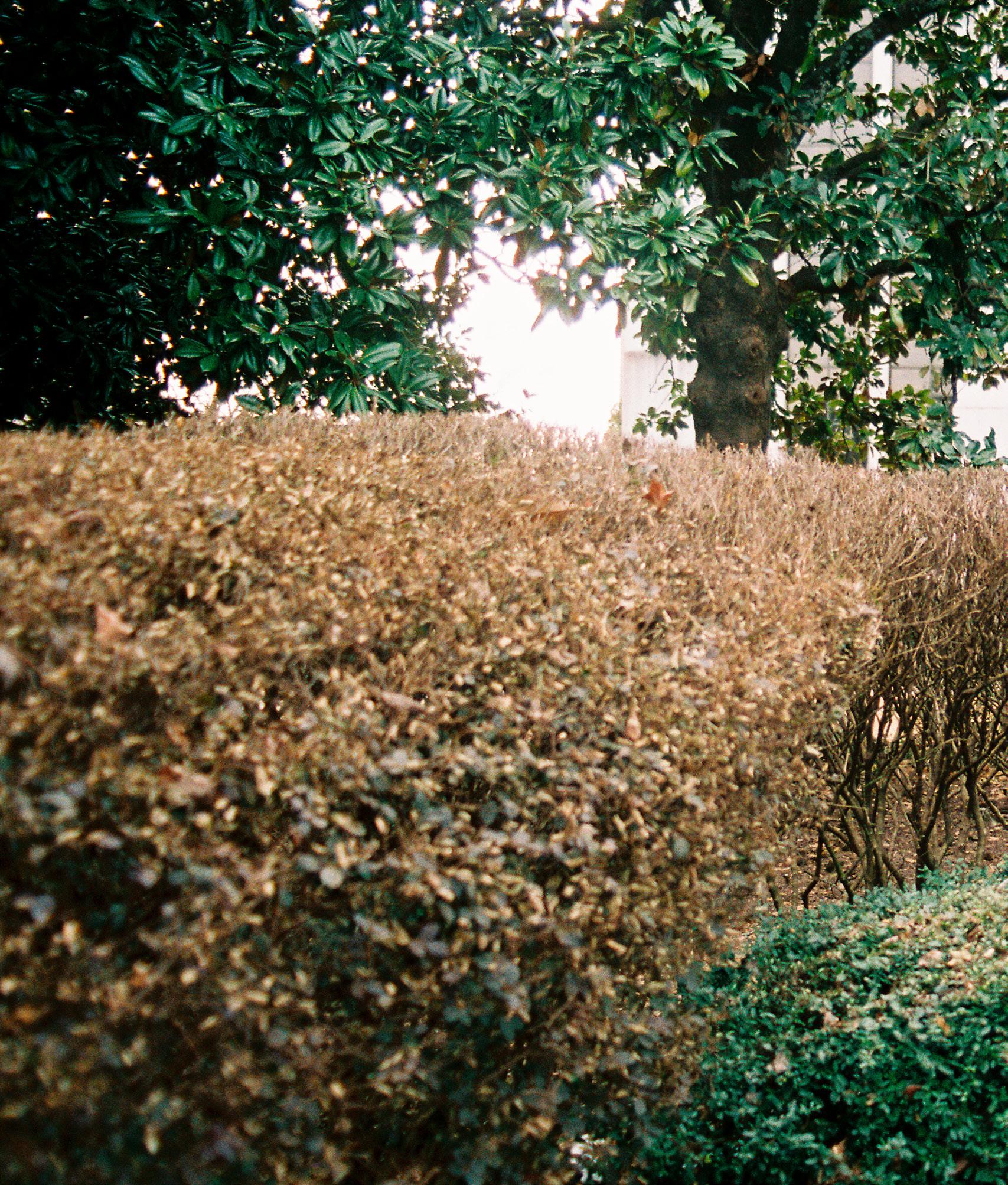

G: Many of those in support of Cop City politicians like Brian Kemp are using the rhetoric of an outside agitator. And a lot of the activists seem to not be from Atlanta, especially those who have been arrested on domestic terrorism charges. What does this mean for the movement using that rhetoric to describe the activists, and what are the consequences of this phrasing? Should that [outsider agitators] even matter?

Franklin Yeah, I think it doesn’t matter where the organizers and activists come from. I think the language of outside agitators is the historic language of southern segregationists who were defending Jim Crow laws. So for me, when I hear not only Brian Kemp say it but Black politicians, elected officials, and the police department captain use the language of outsiders, people coming in for Atlanta, it harks back to the day.
Dr. King was criminalized and constantly called an outside agitator, constantly called “somebody who
doesn’t belong here,” who’s stirring up our local population. Dr. King, freedom riders, civil rights activists, and organizers continually went everywhere in this country where oppression was at work with local populations to organize. And just to be clear, it’s a false narrative. Many if not most of the organizers and activists who have been opposing Cop City have come from and do live in and around Atlanta. But if folks want to come in from outside, we welcome that. We think that there is no stigma whatsoever from folks expressing their so-called First Amendment rights by coming here and protesting
what they see as an illegal law, an immoral law, something that will oppress people the same way the civil rights workers, the freedom riders did in the fifties and sixties. We’re proud to have people come here and help support a struggle against Cop City.

I think the meaning of the language is to create a narrative where protesters and organizers are criminalized, and that has to do with the language that’s used. And obviously the charges of domestic terrorism against nineteen organizers and activists—this is meant to be a scare tactic, not only to the organizer’s but to criminalize the very nature of the work that folks are doing and to make the general public scared of those organizers, even though the overwhelming majority, if not everyone who’s been arrested, particularly those in the forest. But even at the demonstration that happened a few nights ago in Atlanta, those folks who were arrested were doing nothing but sitting in trees in the forest, or in camps. They were not engaged in any activity whatsoever other than what would be considered civil disobedience at the time of their arrest. And there’s no information that the police have provided or have that can suggest that they were involved in any other activities other than that. And so this is a scare tactic that the governor is using, that the mayor is using, that the country is using in conjunction apparently with Homeland Security and the FBI.
G: It's often used to make the claim that the outside agitator is infringing upon the democratic decisions that have been made by the people. Which, again, doesn't follow through when the political system is very undemocratic and when this proposal came about in a very undemocratic way.
Franklin Yeah, this proposal came out of nowhere, and again, it came out of the Atlanta Police Foundation. They expected this to sail through. They were supposed to have public hearings on this at first. They scheduled no public hearings—only when organizers and community folks started to hear about these plans, they scheduled one hearing. And at that hearing, they wouldn’t even take questions from the audience except for the ones that were written down.
MERGOAT MAG SPRING 2023 117

"You know, it's not just about voting. It's not just about being allowed into certain institutions which are mostly White. It's really about fighting oppression through having power and fighting for power."


Also, they got to choose what they would respond to. Organizations on the ground immediately started organizing against Cop City.
All data taken at that time period showed that over 70 percent of Atlanta was opposed to Cop City by the day of the vote. And 70 percent of the constituents who called in said they were opposed to Cop City, and yet the city council went ahead anyway and passed it. Current polls show that over 90 percent of the residents adjacent to the forest (a working-class Black community, over 70 percent Black) have said that they are opposed to the building of Cop City on forest land, which was actually promised to that community for recreational use with a playground, hiking trails, a creek. All of that is now being wiped away so that they can build a hundred-acre police training center, a militarized police training center in the backyard of a working-class Black community.

G: For those who do not know, can you provide a summary of the history of how Cop City came to be in Atlanta, within this forest, and at this particular time period?
I'm thinking especially about the close proximity of this proposal to the Black Lives Matter movement, mostly a time period of opposition to an increase in policing.
Franklin Yeah, you’re exactly right. In 2020, when George Floyd was killed and, here in Atlanta, Rayshard Brooks was killed, the call in the streets was for defunding the police. The call in the streets was for finding another way to provide public safety to the community. Because using the police to solve issues of homelessness, folks who are having a mental breakdown or in some way are needing some mental health services, stopping folks in their cars, all of those things were leading to not only violence by the police but even the arrests that would take place. Over
90 percent of those arrested in Fulton County, which is the county Atlanta is in, are Black, even though Black folks no longer represent over 50 percent of the population here. So we see that the idea of policing in these communities was something that was being challenged. And what the police did instead, because of the uprising, because of the way folks were starting to have a conversation about police, they wanted a morale booster.
They decided to sort of sweep off these old plans and to make this a huge dramatic event in terms of building the site that, again, they
MERGOAT MAG SPRING 2023 121
dekalb county income distribution Dataset sourced from the Research & Analytics Group at the Atlanta Regional Commission; data from the US Census Bureau.
at first did not want the outside public to really know about, but they thought it was going to be a gift to the police.
Once these plans were found out in late 2020 and early 2021, there were immediate reactions to them from the community—from organizers and activists—that this was something which was not on the path of reforming or changing police behavior, changing how policing is done. This was actually doubling down on the efforts to militarize the police.
I think that, again, the safest communities are the most wellresourced communities in this country. It is communities that have resources for afterschool programs or good education or parks or other activities that people can engage in. It is not the communities that have police on every corner. We have to understand that the only way to solve issues of public safety is to bring resources to communities. No one asked the city to give $30 million dollars of the city’s money to put towards a militarized police base, where at the same time there is no affordable housing.
In Atlanta, public housing was destroyed by mayor after mayor after mayor. Democratic, liberal, so-called liberal, mayor after mayor after mayor. Their voucher program is something that can be rejected by landlords, and so it’s not working. And so if Atlanta really cared about
issues of public safety, it would find a way to put resources there, as opposed to something like this monstrosity of a police militarized center that no one asked for in the first place.
G: Can you summarize and synthesize how the development of Cop City in this particular location develops any possible connections to environmental racism?
Franklin Yeah, I think this is a matter of the city itself—the city not caring about those Black constituents again in a neighborhood that’s over 70 percent Black, not caring about its promises that were made to the larger Black constituency. And instead, deciding that it would sort of run over those concerns and build something that will basically destroy the first hundred acres of the 300 acres of property. And there’s nothing in the lease that prevents them from tearing down the other two hundred acres. In addition to that, there’s a movie studio that’s also being built, which I believe is also a hundred-acre facility.
This forest is considered one of the four lungs of Atlanta, and in terms of climate change, it is protecting the community from flooding. Southwest Atlanta is one of the heaviest flood zones in the city, and without this forest, the water during the storms will only get worse as it helps with drainage. Not to mention the noise pollution from explosives
and shootings that are going to be happening in the five firing ranges, the traffic running through that particular community from Cop City.
G: I'm curious about the escalation of police actions, particularly in recent months, which includes the trumped up charges on activists of domestic terrorism, the killing of Tortuguita, and the declaration of a state of emergency and bringing in the National Guard. Why is this level of escalation happening in your opinion, and how do you interpret this escalation?
Franklin To me, this escalation continues to happen every time we continue to get media attention, every time we hold a rally or demonstration, any time there’s a report that more people are against Cop City. I think they thought that this movement would go away. The fact that this movement hasn’t gone away, they continue to up the ante. They have been arresting people ever since we first started organizing against Cop City—when we would have demonstrations on sidewalks, in city hall. The police at the end of those demonstrations would come in and arrest multitudes of people. The charges at that point would be disorderly conduct or obstruction. But at that point, the police were using violent tactics against organizers, and they’ve only stepped those up.
BLUE HOLLERS IN THE SHADOW OF THE HOLOCENE ECOGRIEF 122
In December, when the police started raiding the forest from time to time, they started actually charging people with domestic terrorism. Then, after that, of course a week and a half ago now in another raid of the forest in which they used violence, they actually killed a protester. In addition to those tactics, they’ve used rubber bullets and pepper spray, tear gas, throwing organizers and activists on the ground, ripping apart their campsites. These are all violent tactics that the police have used since the beginning, but now have stepped up their tactics and their narratives and their own cohesion to try to stop this movement from happening.
G: What is the proper response to these escalations by activists?
Franklin I think it’s to expose the police violence. It is to push back against the police violence. I actually think the tactics of disobedience and direct action are worthy tactics and tactics that should be used in movement building. I think, when the state itself decides to act in an undemocratic process, it forces the hand of community people and organizers to fight back even more. And so I think organizers and activists cannot just relent when the police try to tell you, all the powers that be try to tell you, what time to show up, what time to end your protest, how you can protest, what signs you can have, what’s acceptable and what’s not. Because they know there’ll be certain types, certain times that they can actually ignore the protest because the media won’t cover it.
The only time the media became interested in the idea of Cop City was when they could try to portray the organizers and activists as violent of some kind. So the fact that the police are continually trying to tell us and the powers that be how we organize means that we have to use other strategies, other tactics to fight back against this police violence.

G: Why do you think the mainstream media is adopting a narrative in support of the police, and that being the case, what needs to be done to elevate this to a broader audience?
Franklin I think that’s the role of the mainstream media. Corporate media is a parrot to what the police say.
123
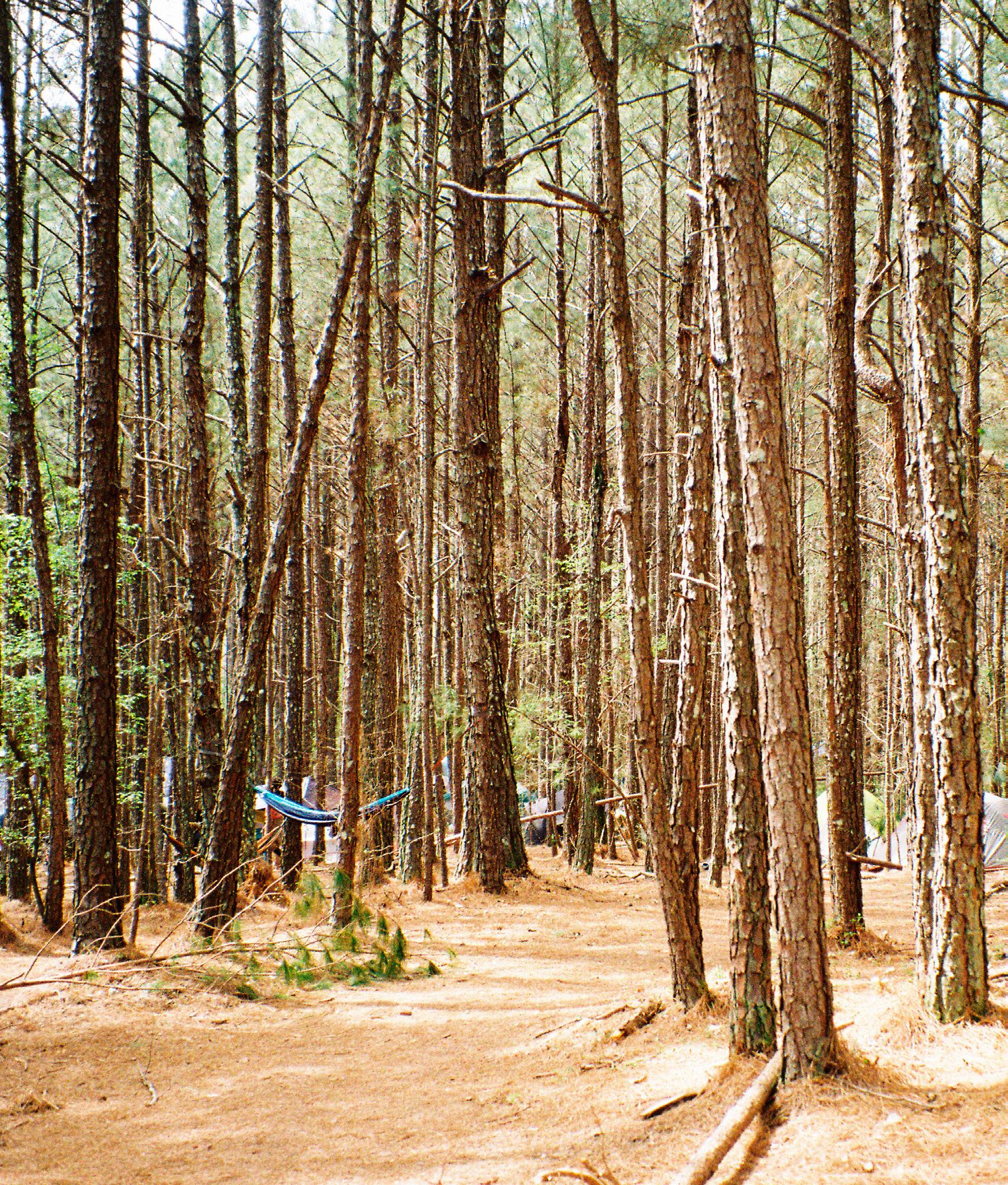
I think they take whatever the police say as if it’s the truth, even if later on, we find out that the police report was a lie or videotape evidence comes out through body cameras, other things that can clearly demonstrate that what the police claim happened was not how it happened.
In fact, the 2020 uprising is really based on the fact that the police put out a report about George Floyd that didn’t mention anything about a cop who was on his neck for nine minutes. It was only because somebody videotaped that incident that we had the explosion that we did. So I think the role of corporate media, and they are corporations, is to side with, for the most part, the police and to talk about bad apples.
But what we need is to break through by using media like you have, other media, that can reach folks who are not necessarily strictly paying attention to corporate media, to what’s happening in those airwaves, because we have to reach people to create the narrative of what’s really happening in the streets. The role of the police in particular communities, the role of the police in stopping movements—we have to continue to get those narratives out. We can only do that, in one part, by creating our own media platforms and reaching the people that we can to let them

know that there is something else that’s happening here that’s not being reported by the corporate media.
G: How do you envision this ending? Both ideally and realistically if they do not coincide?
Franklin You know, for us, it’s about continuing to fight. We think we’re in a position to stop Cop City from happening—with public pressure, with the truth coming out. We think the idea of these charges and the killing of organizers are ways in which, as tragic as they are, have uplifted the movement to another level. So we will continue to fight.
We are under no disillusion that the police obviously have the tool of violence and weapons. They have the political establishment, the resources, and they have the corporate media to back the narrative to most of the people. So we know it’s a continual struggle. But that has never stopped us before. And so we think realistically we can stop Cop City from being built, and we think we’re going to proceed as such. We’re gonna fight, we’re gonna organize, we’re gonna base build, we’re gonna let people know, we’re gonna try to do everything that we can within our power to stop Cop City from being built.
MERGOAT MAG SPRING 2023 125


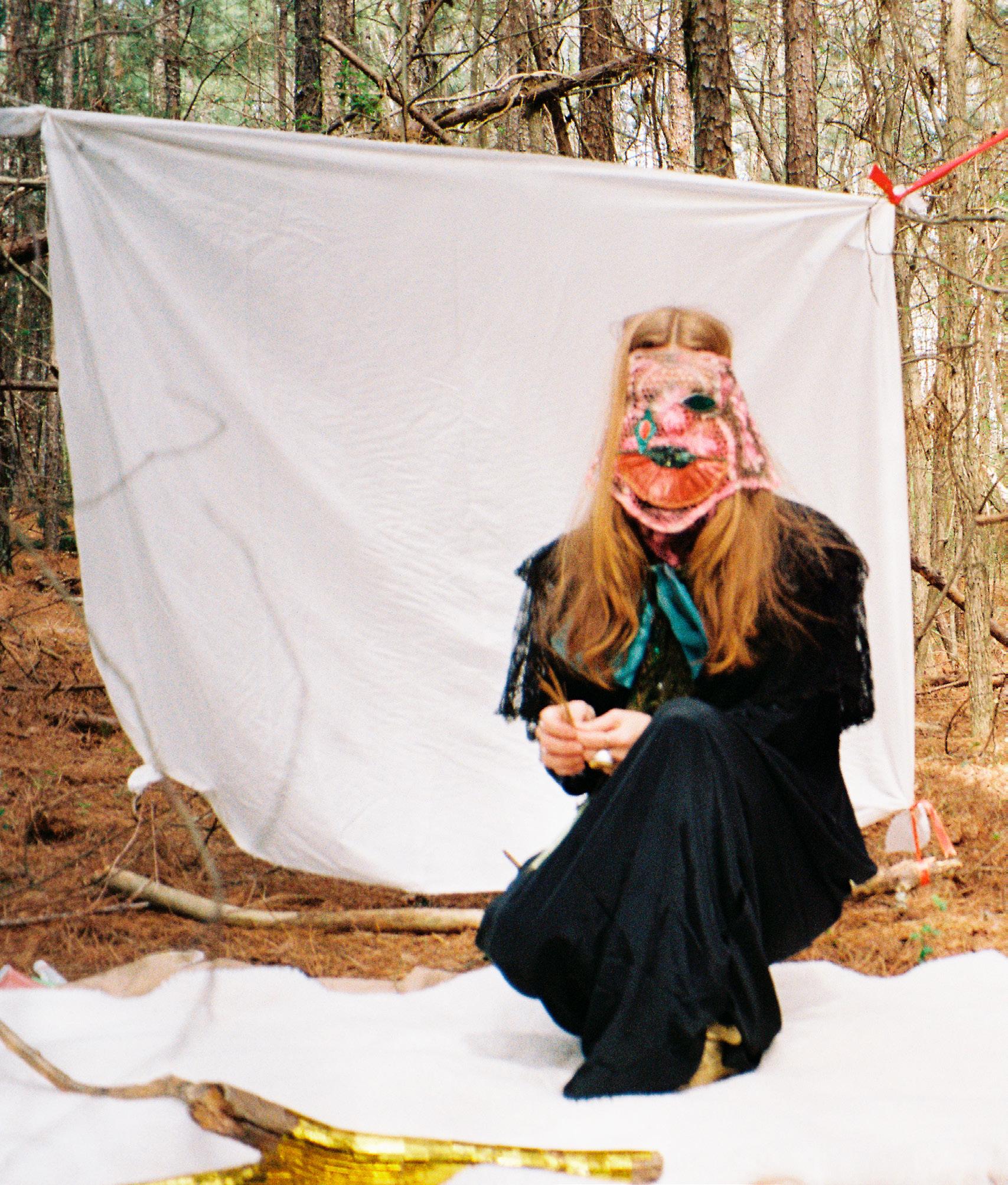

MERGOAT MAG SPRING 2023 129















































 interviewed
interviewed

















 Cop City
Cop City



























